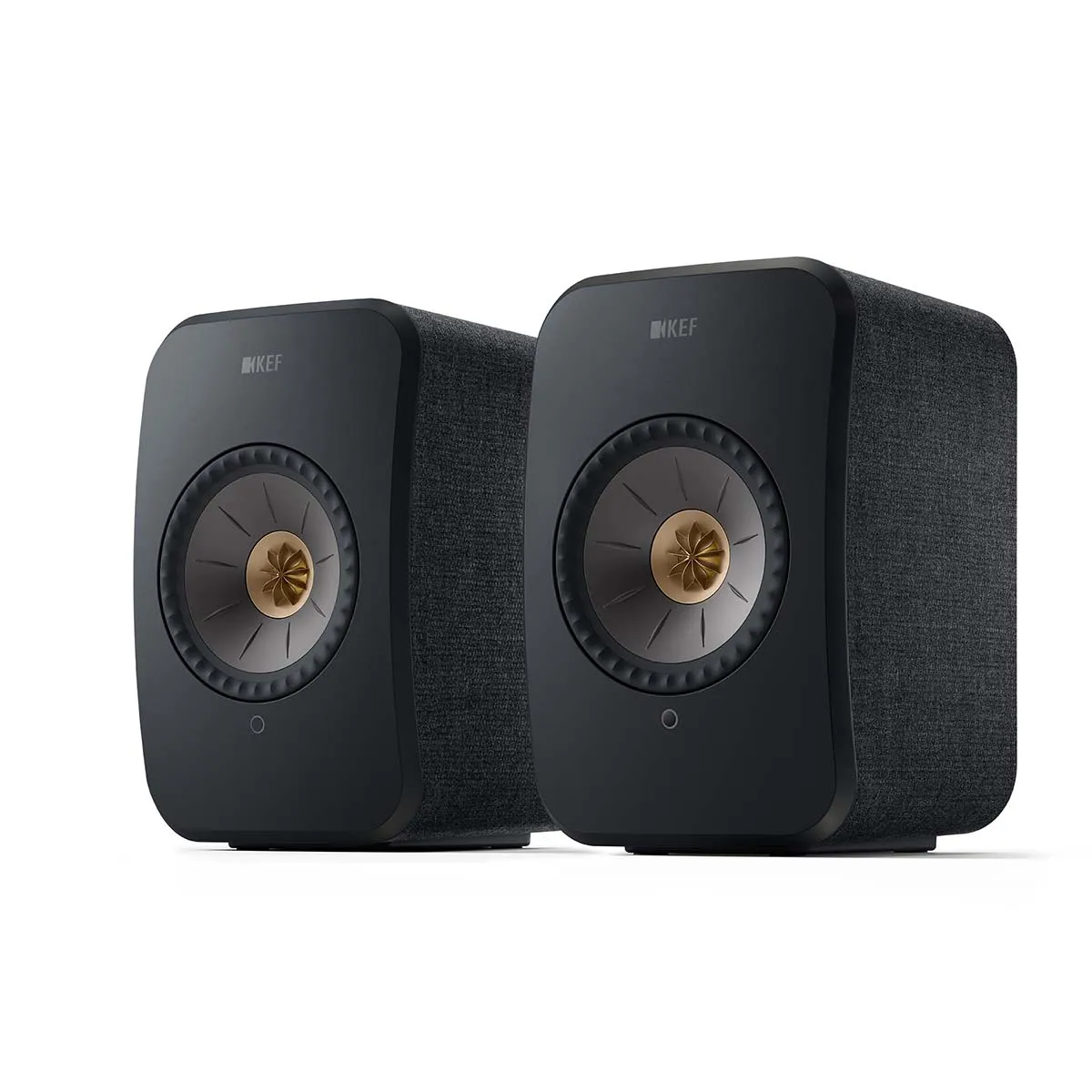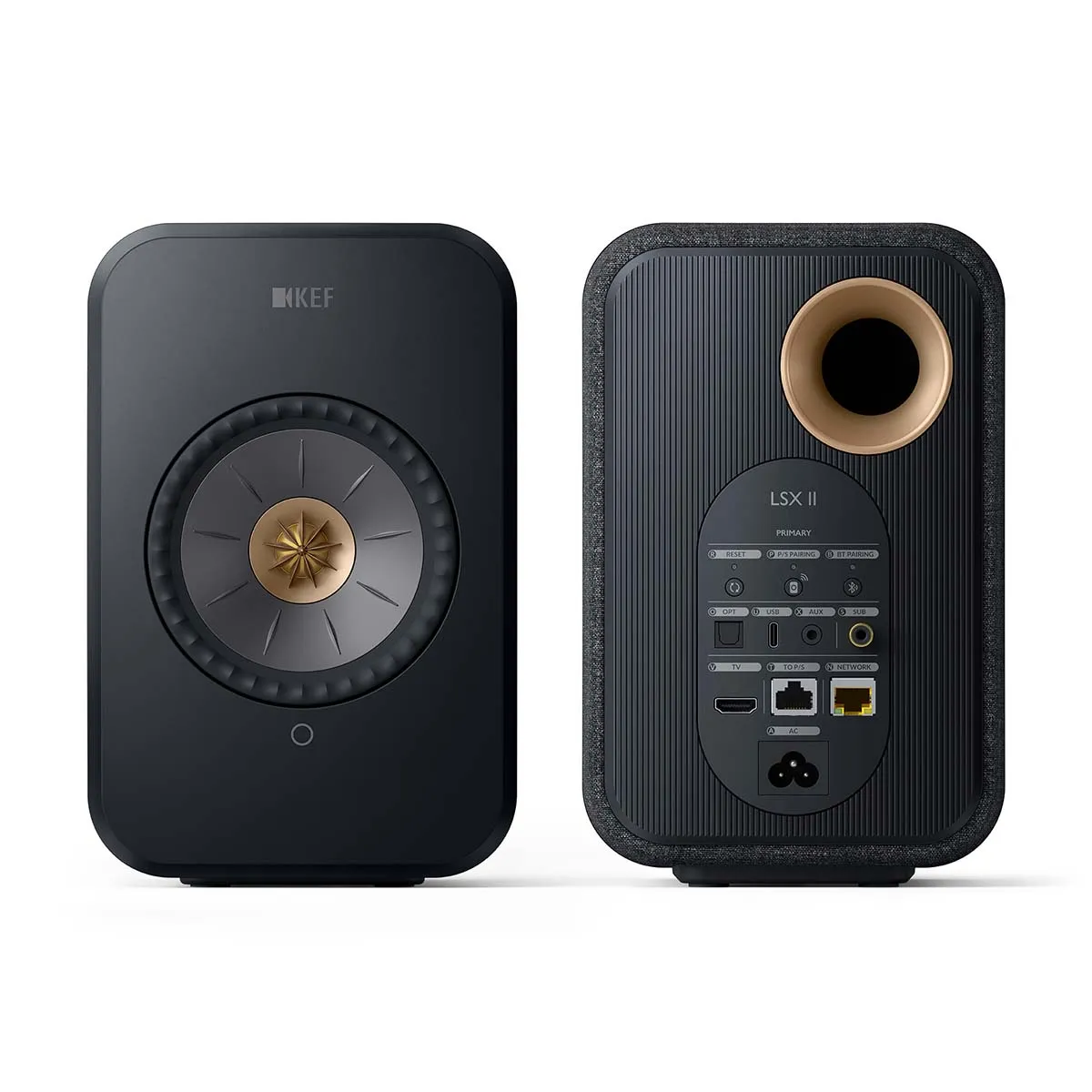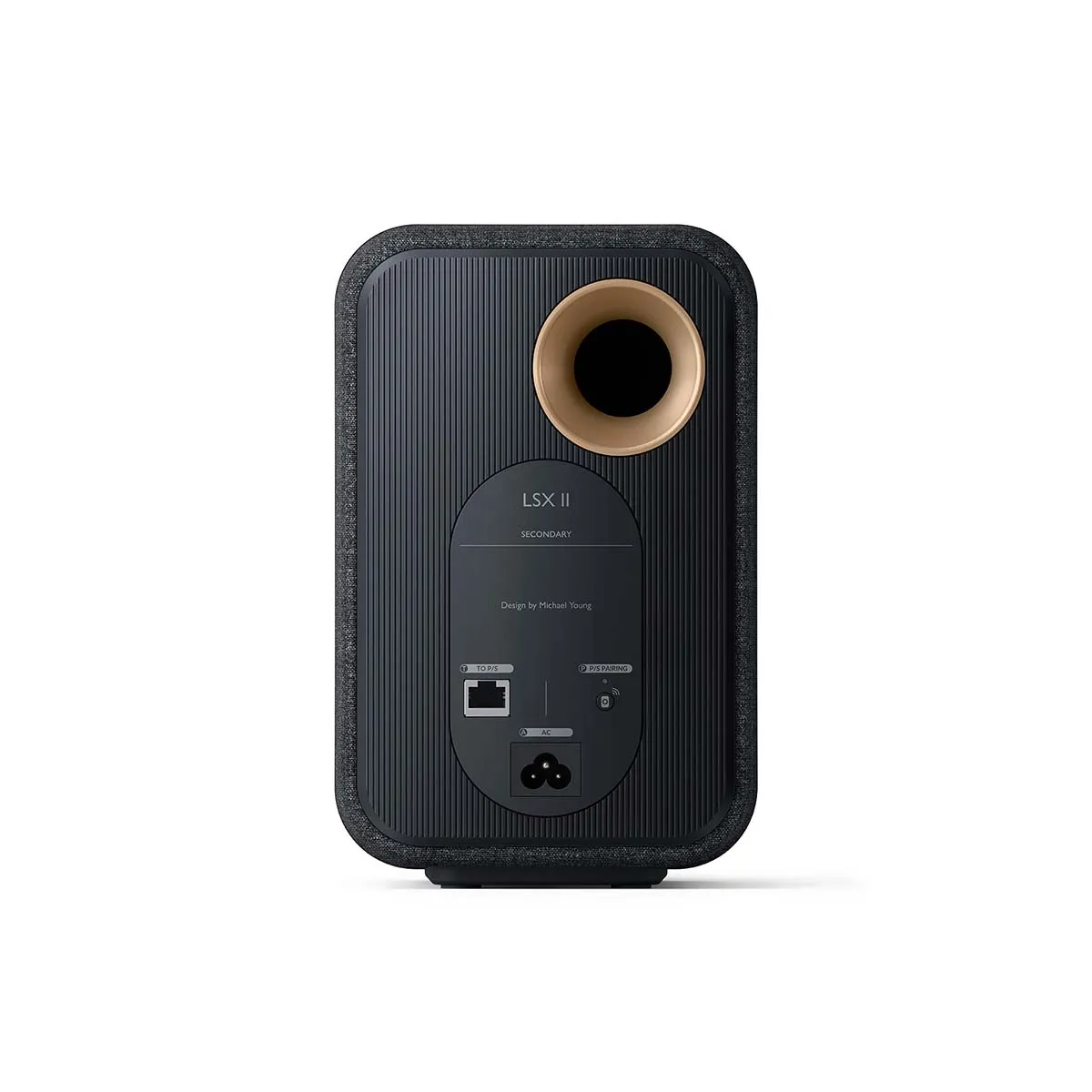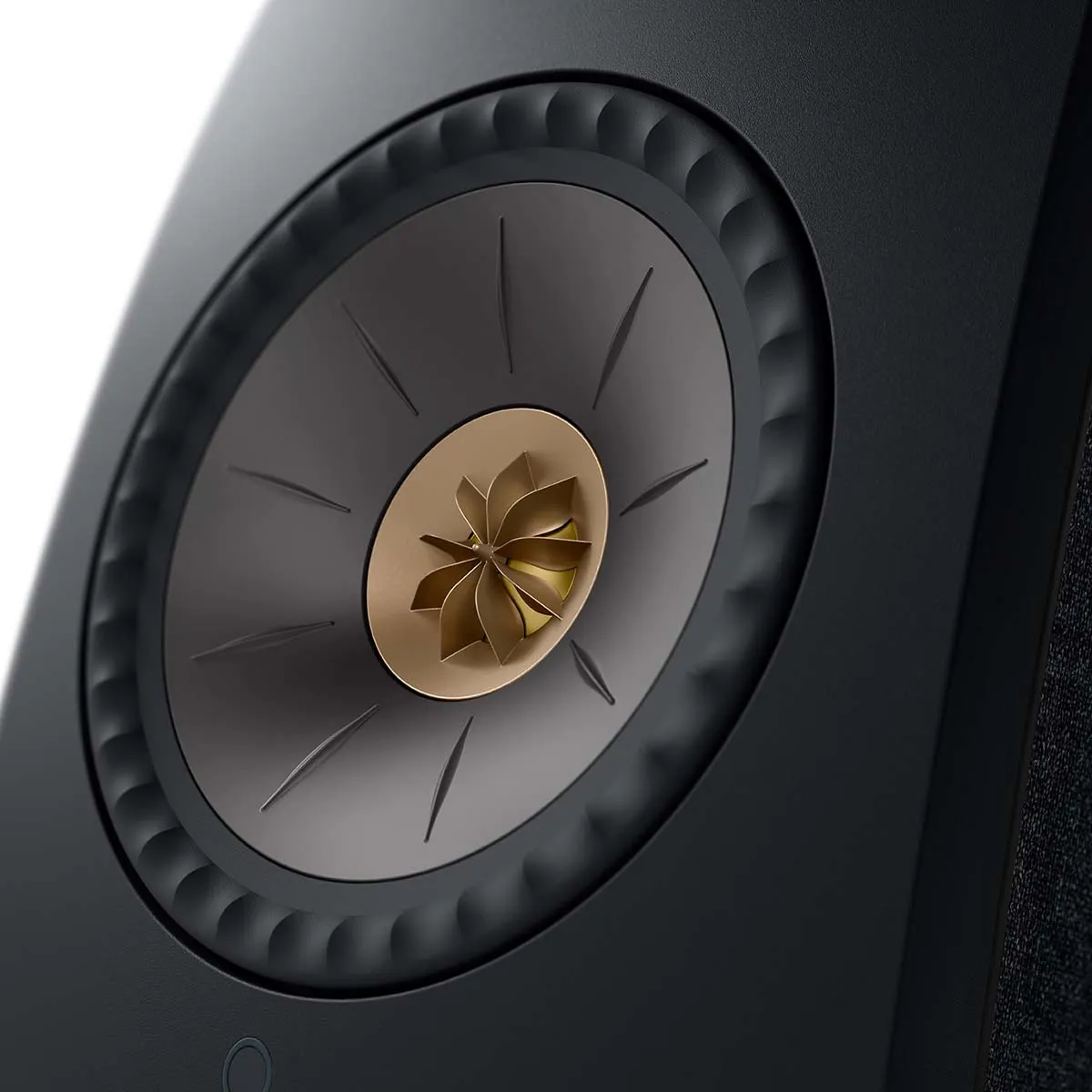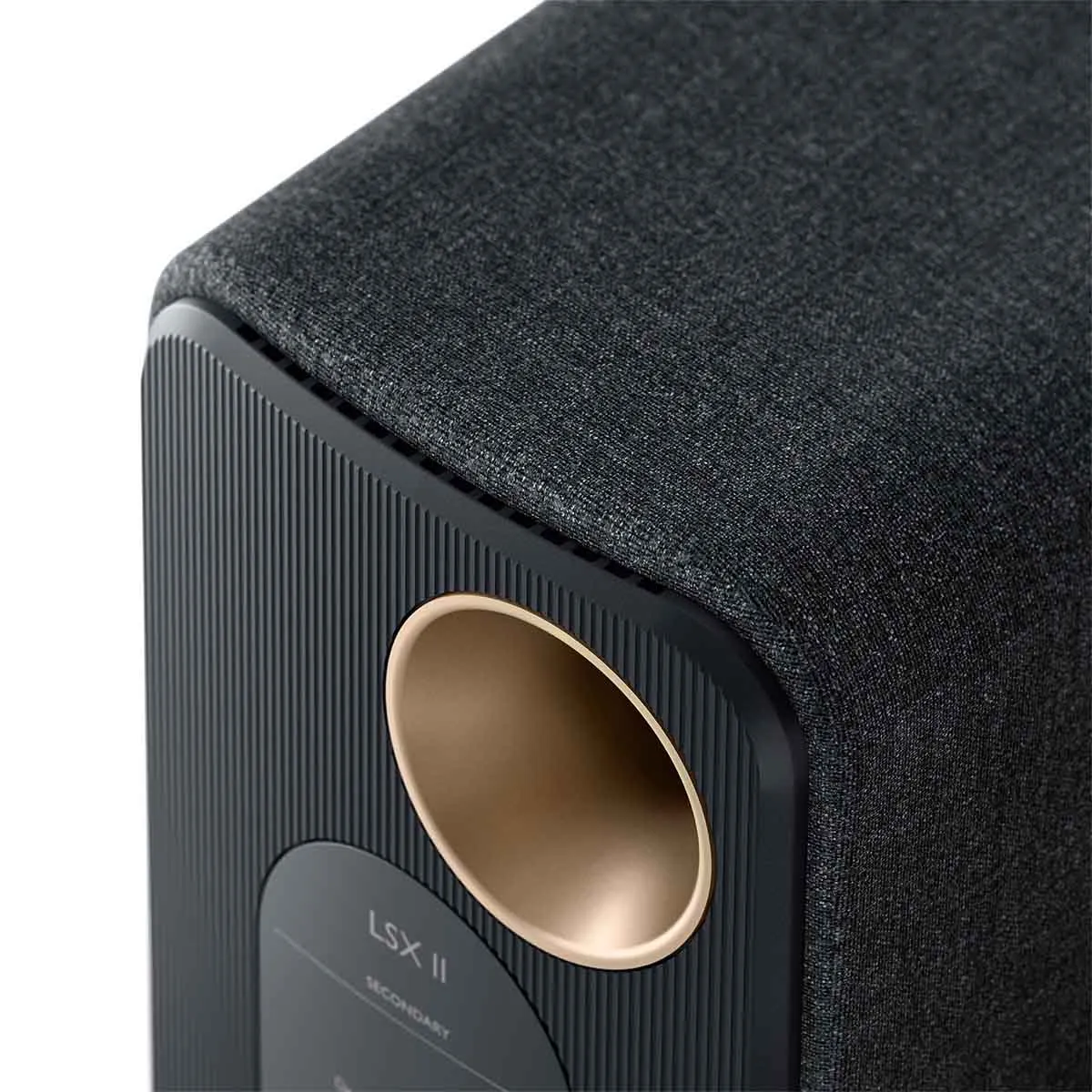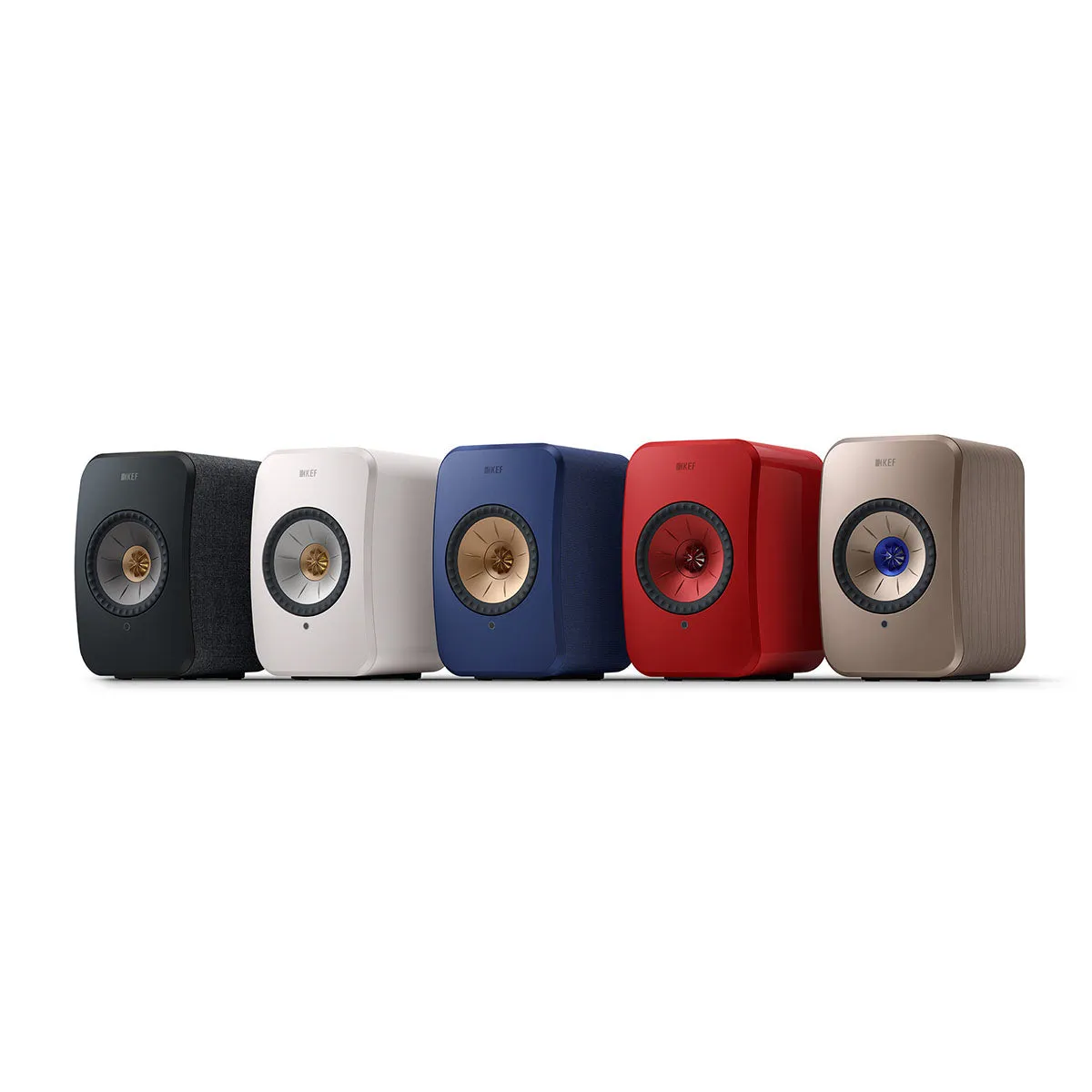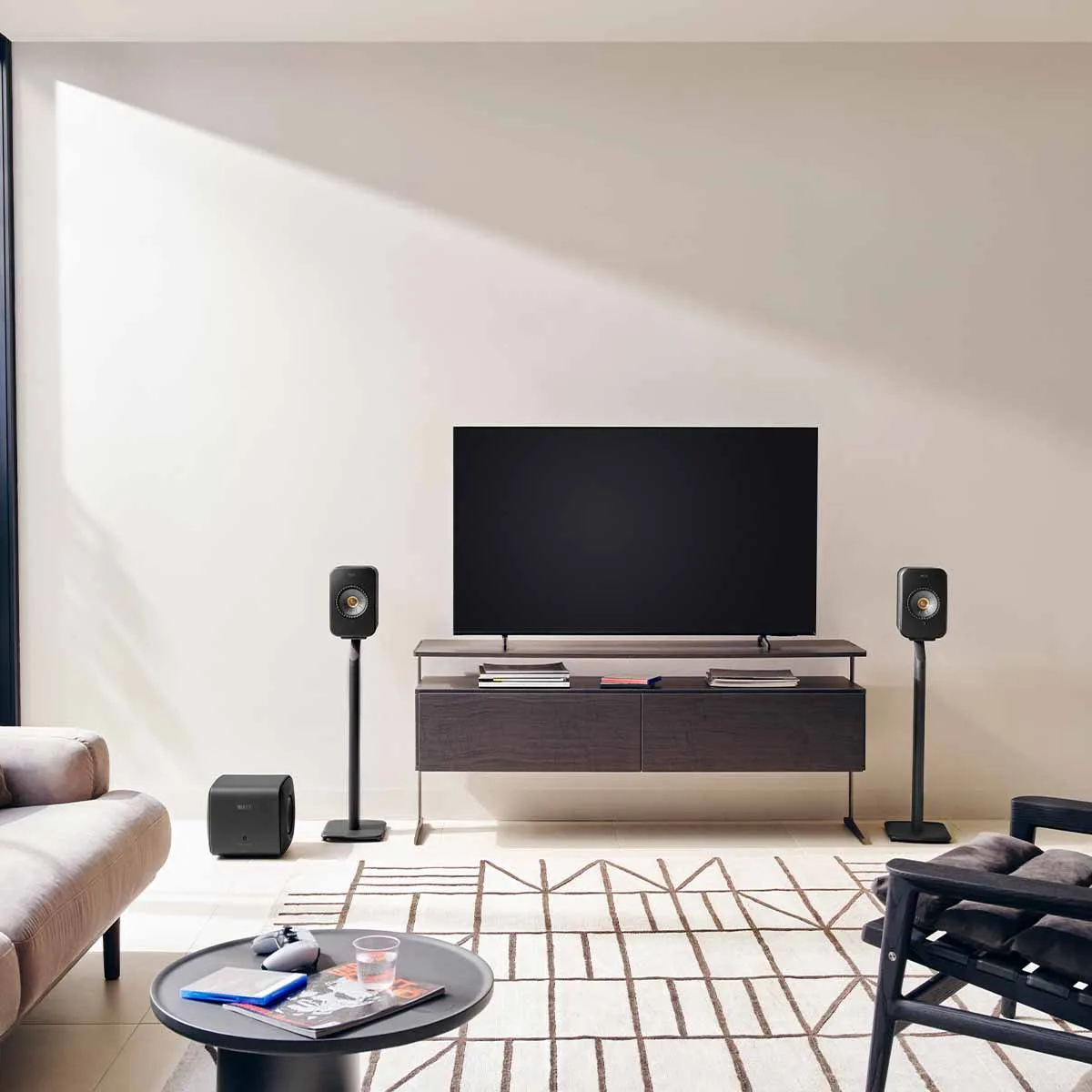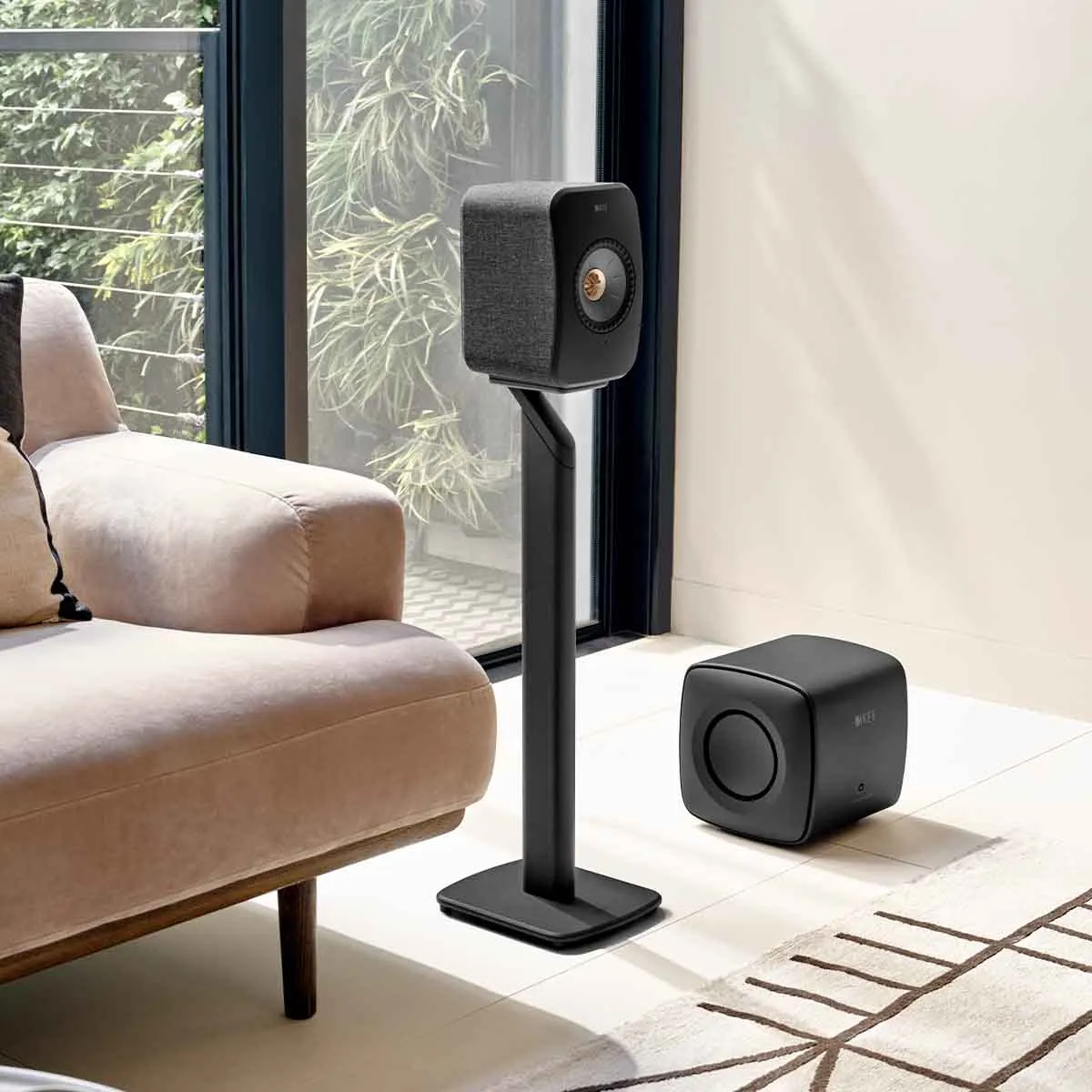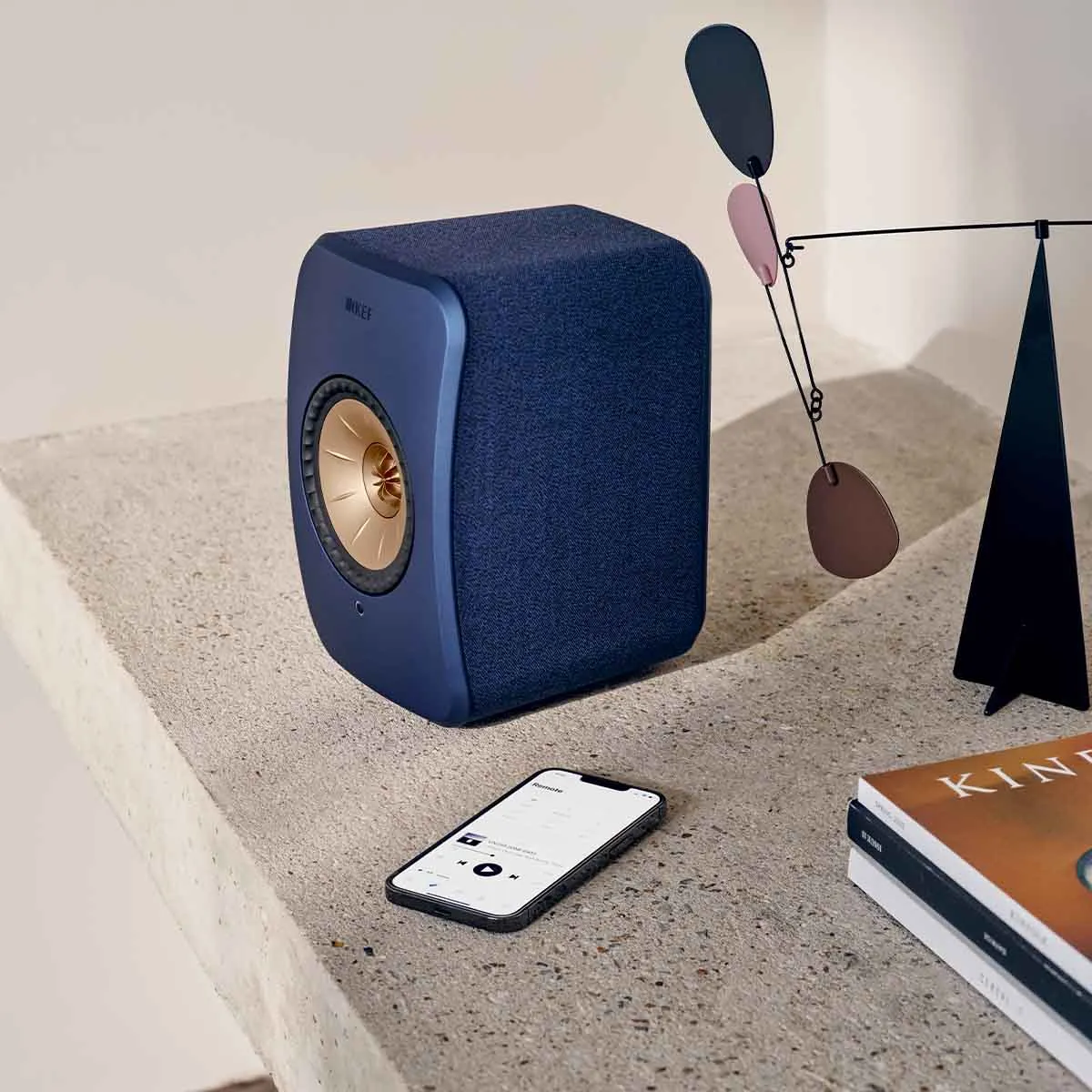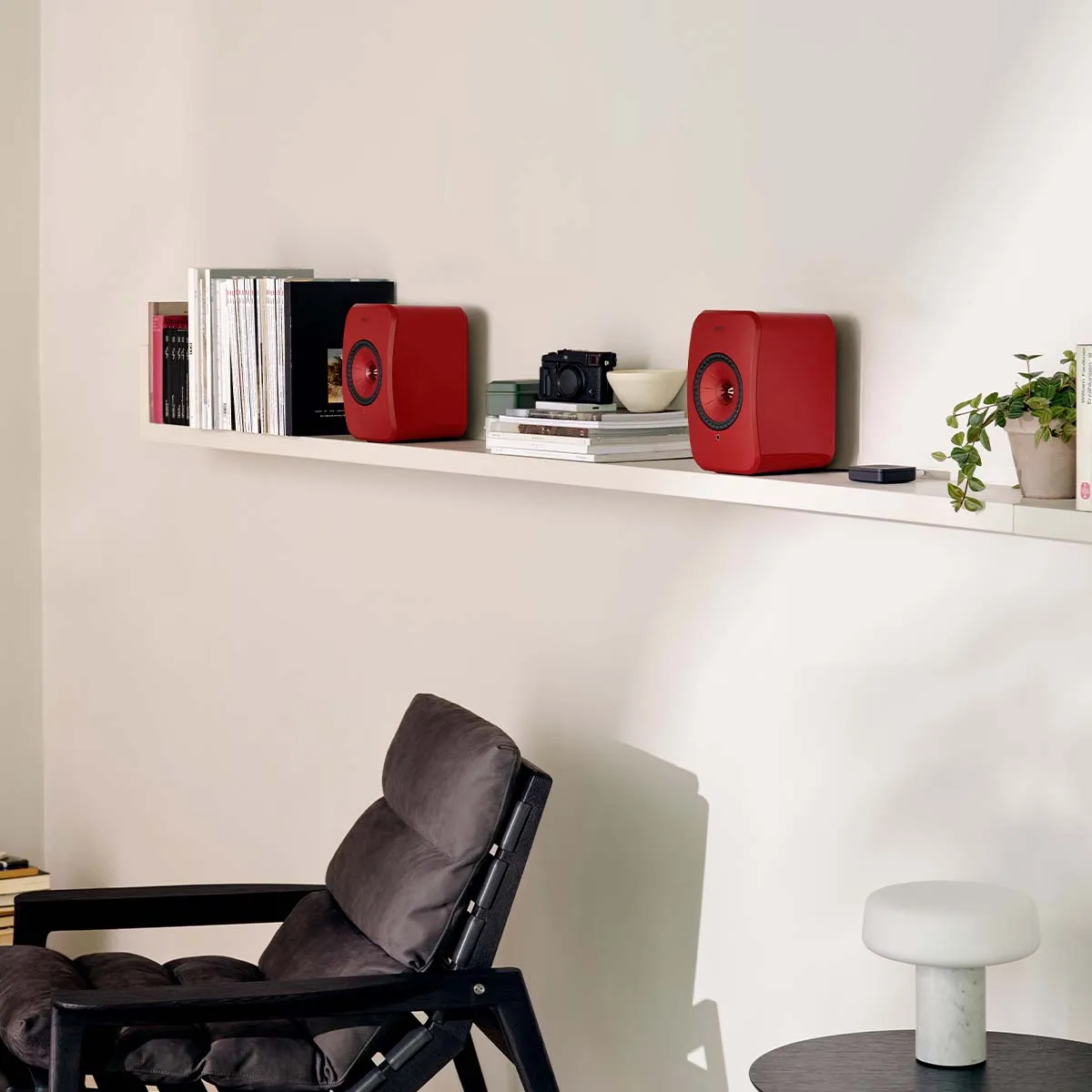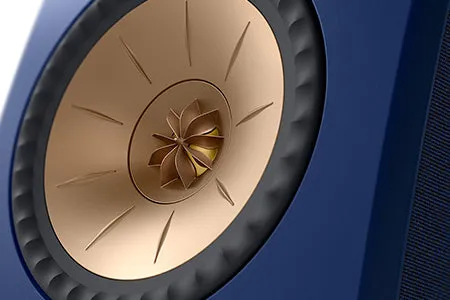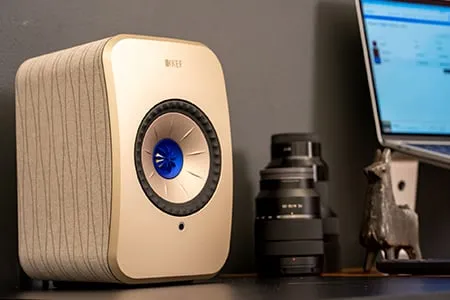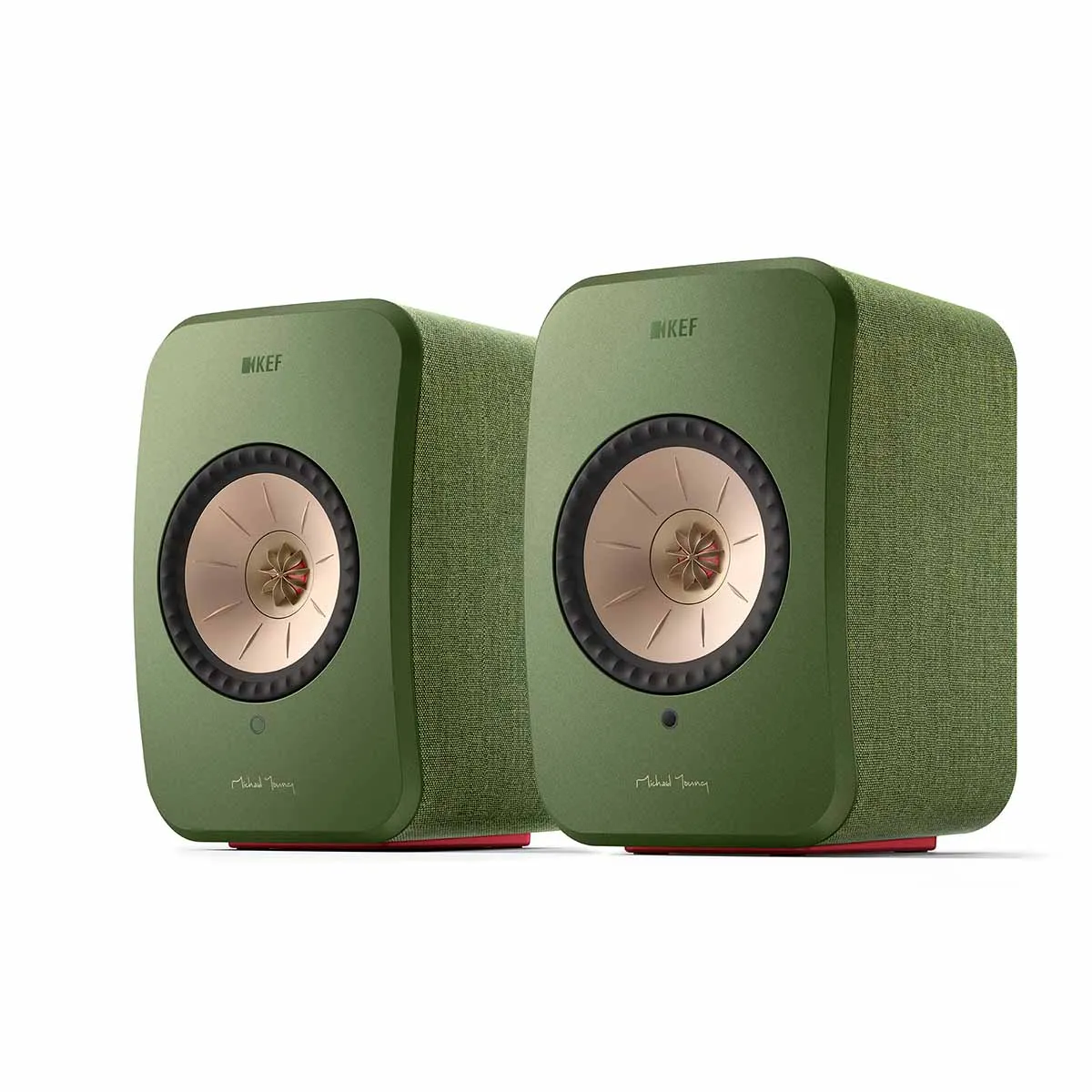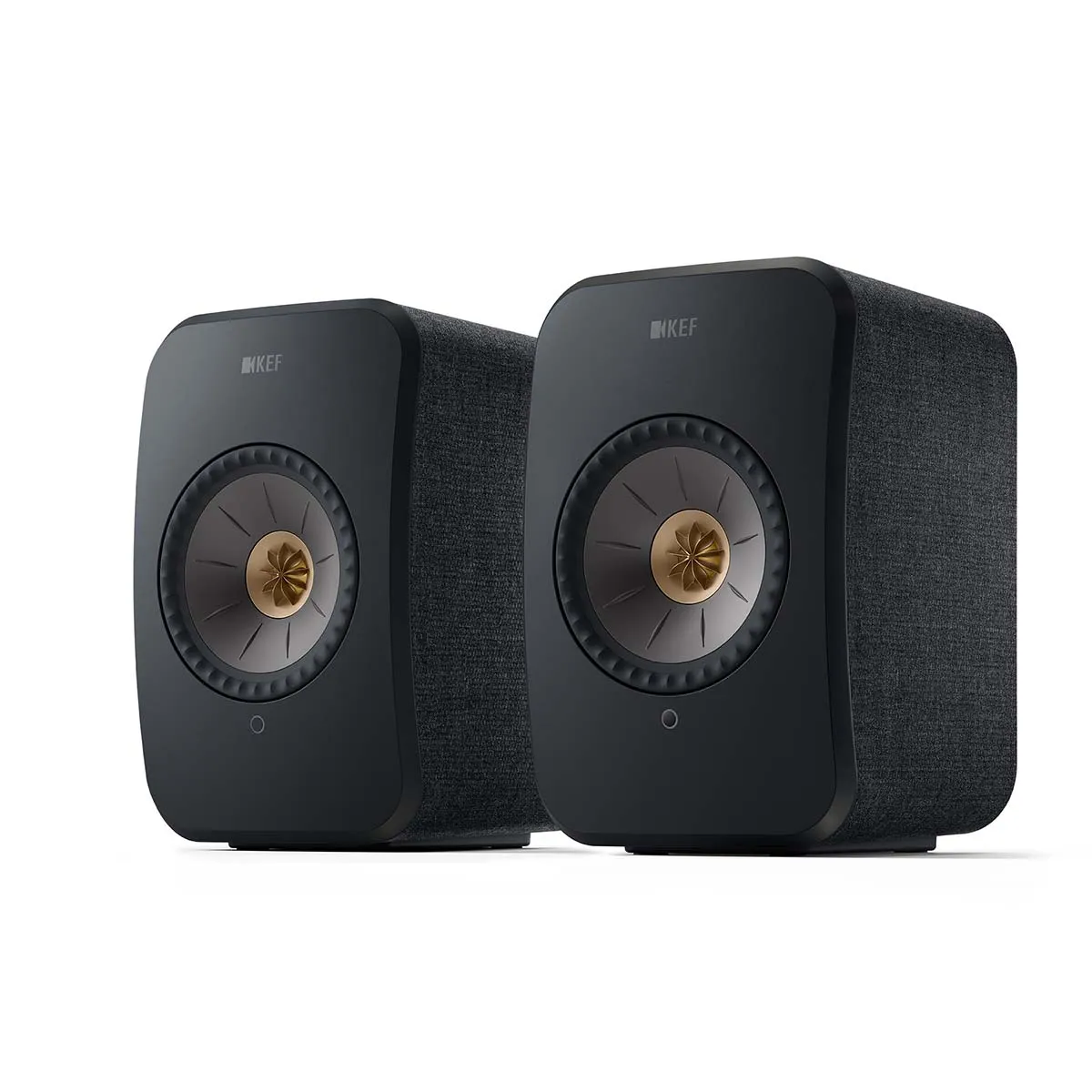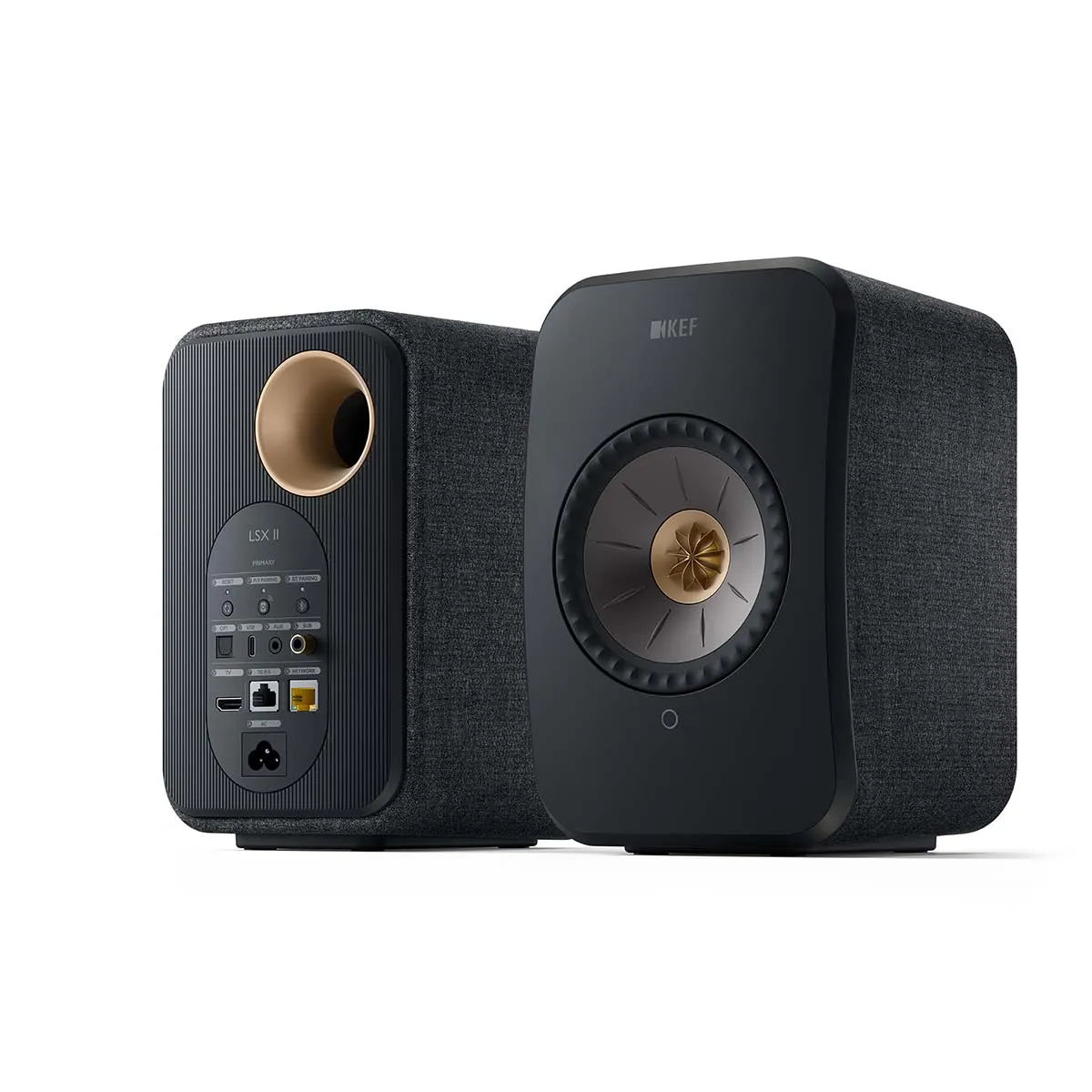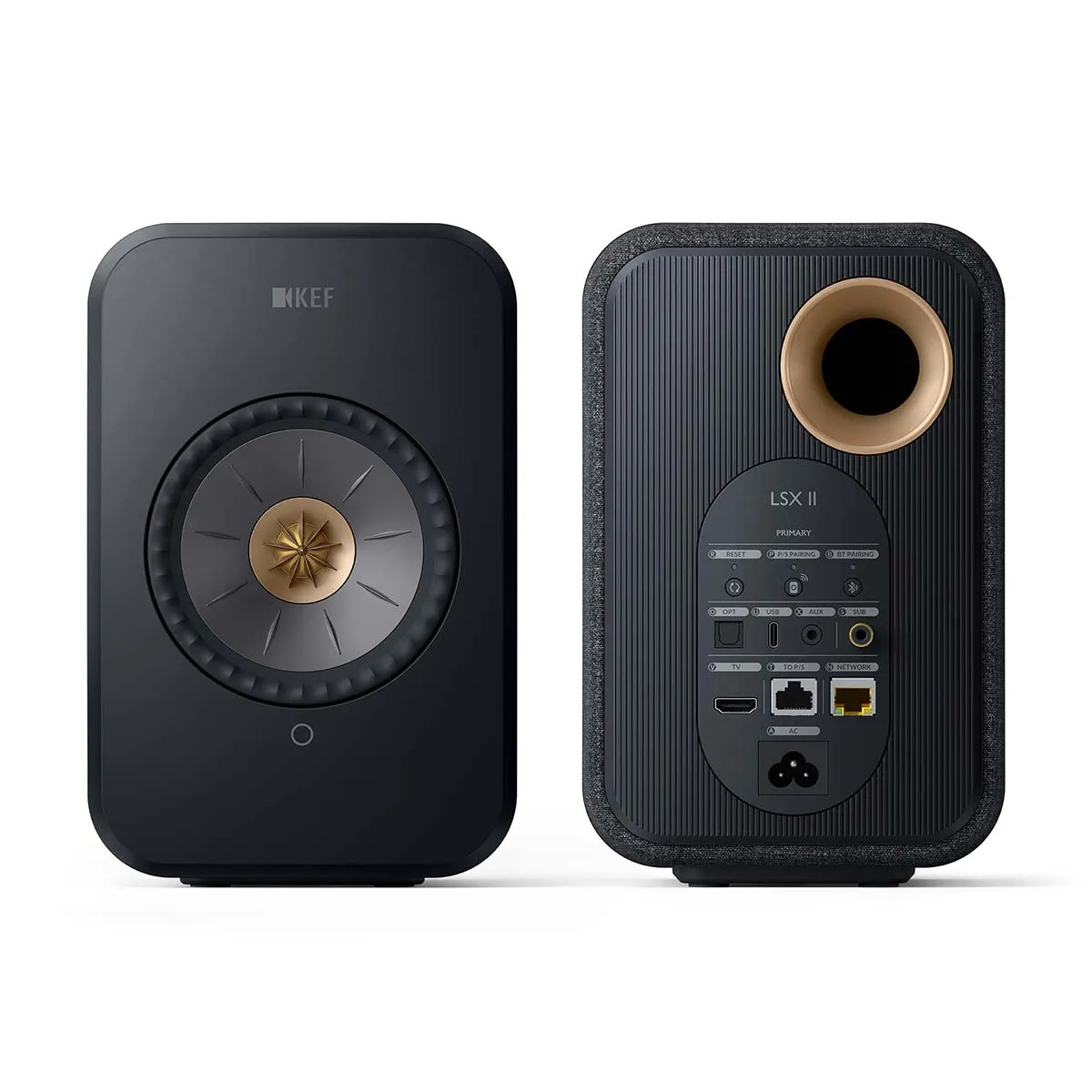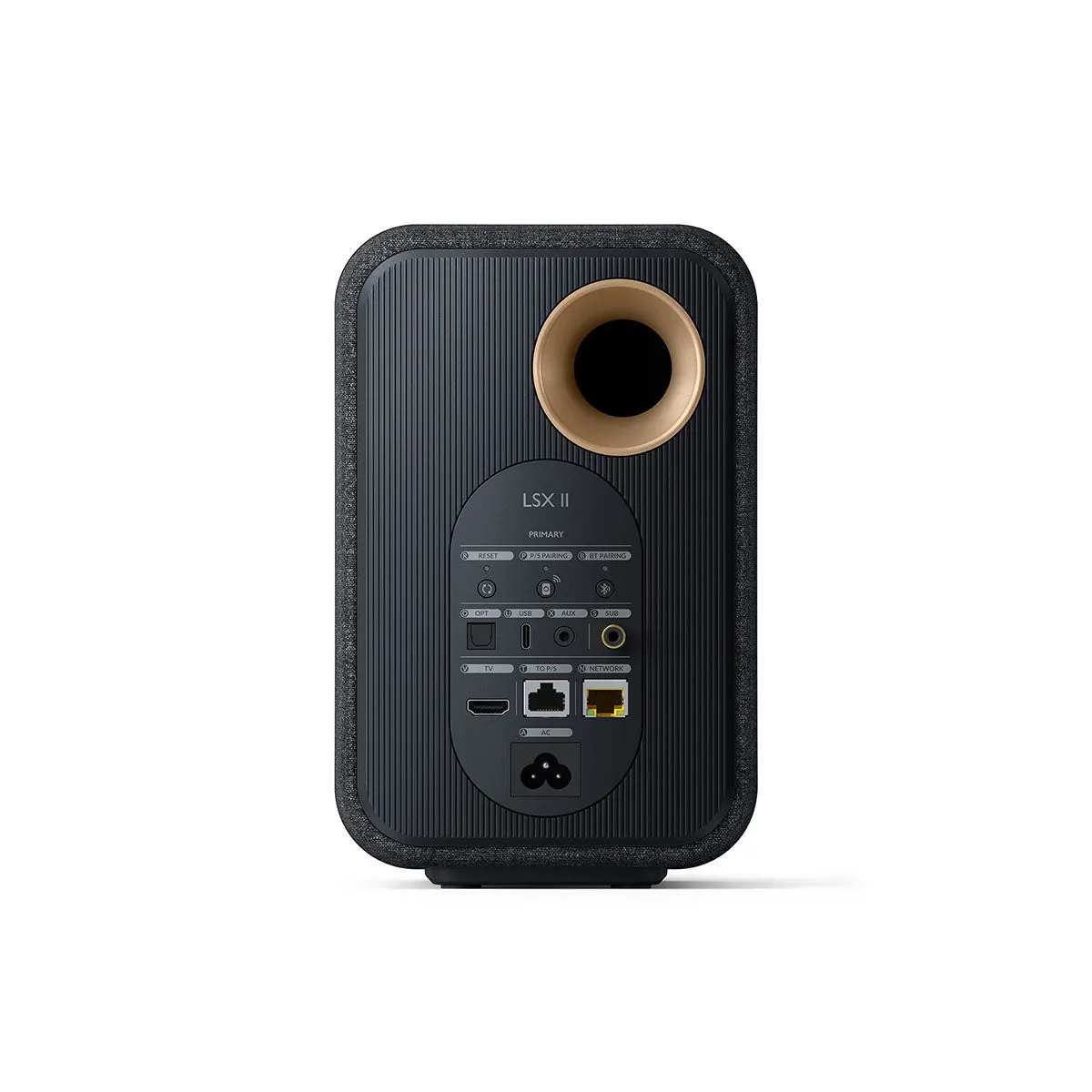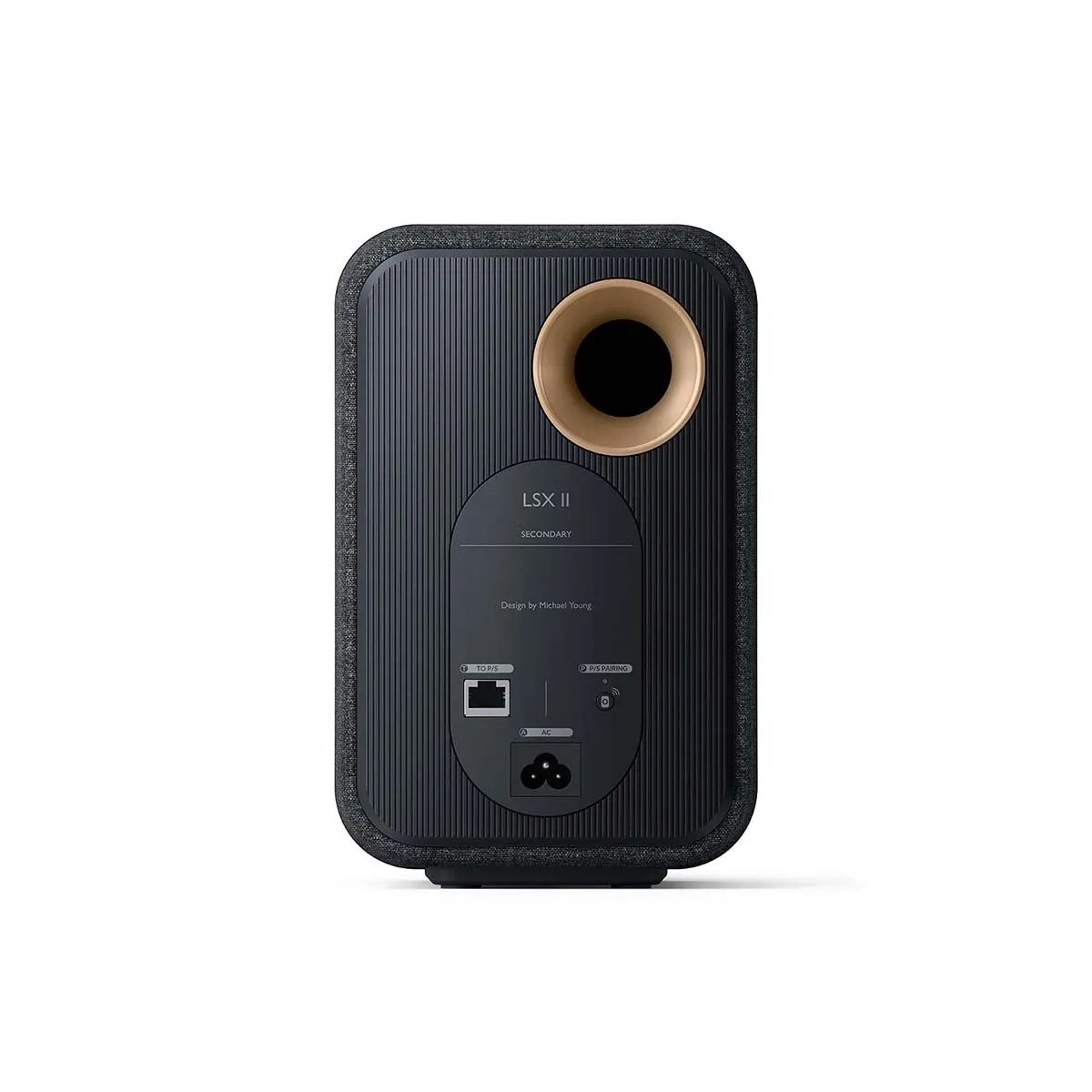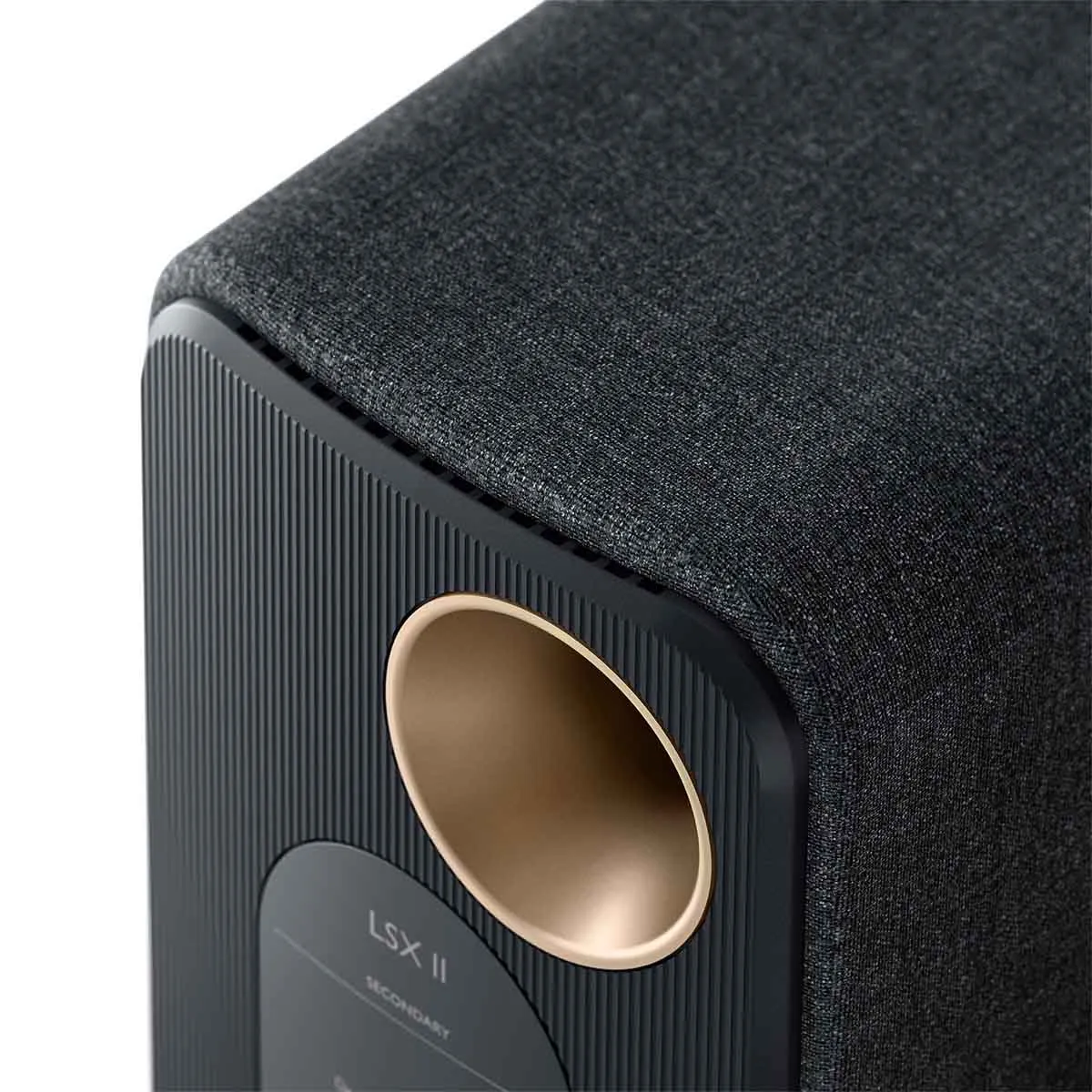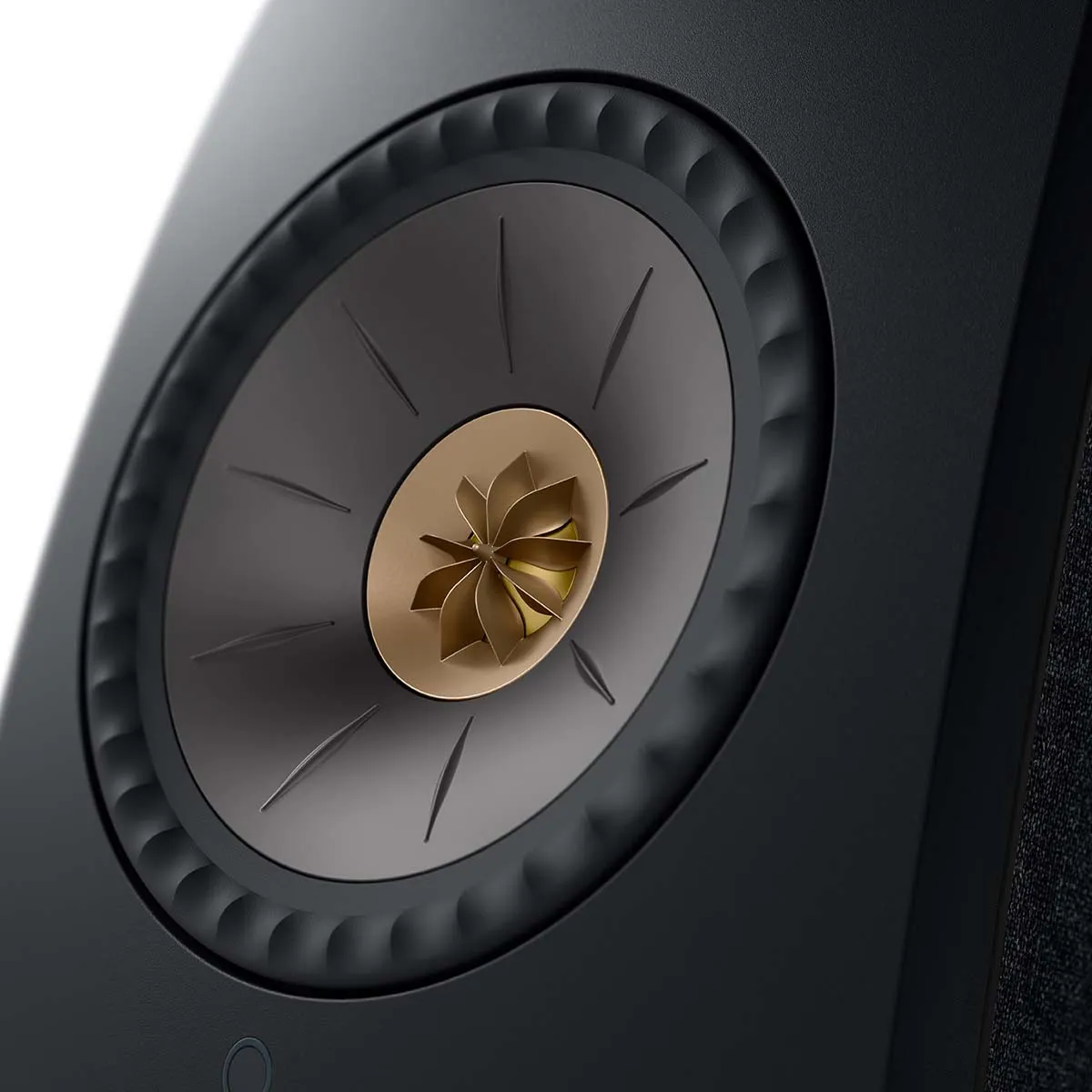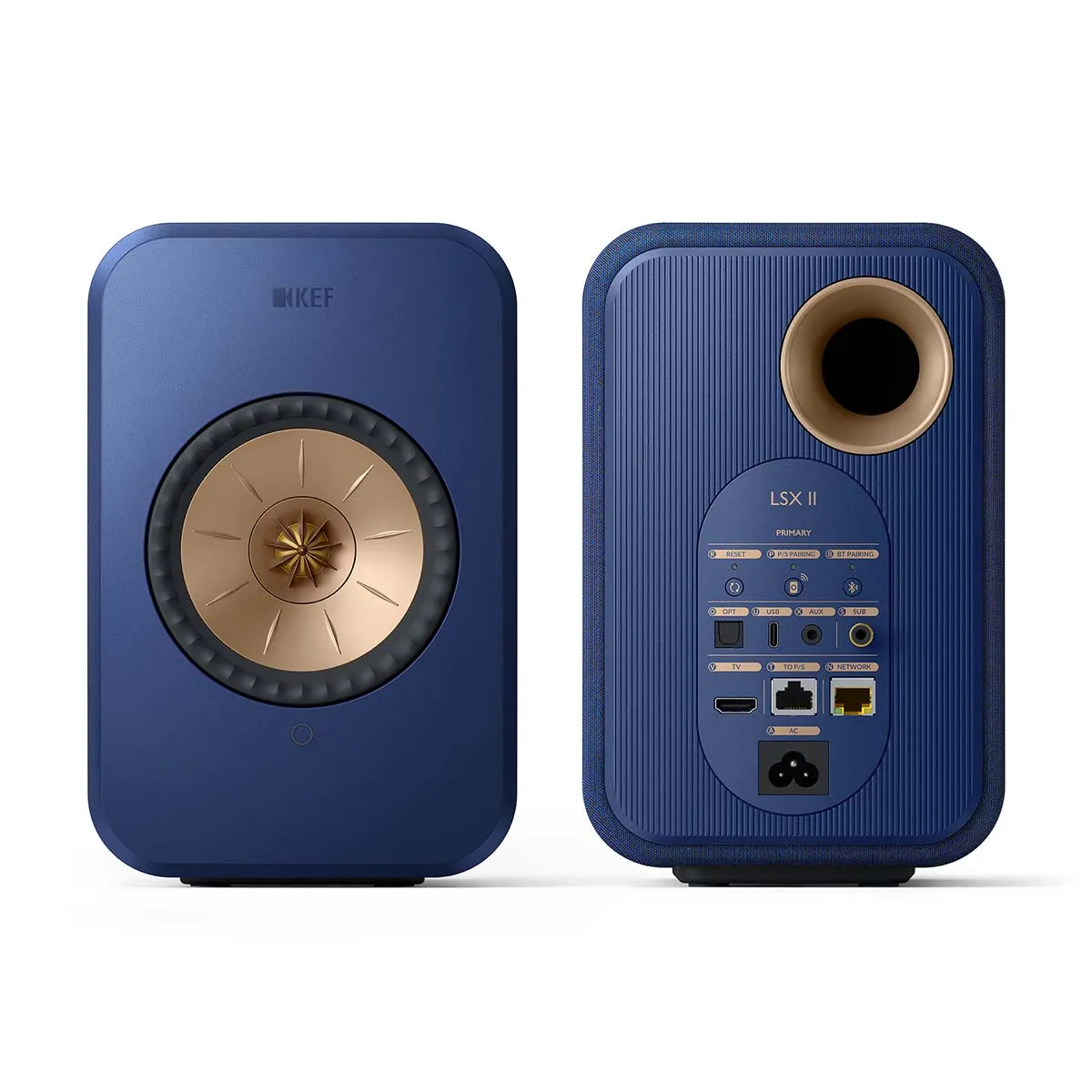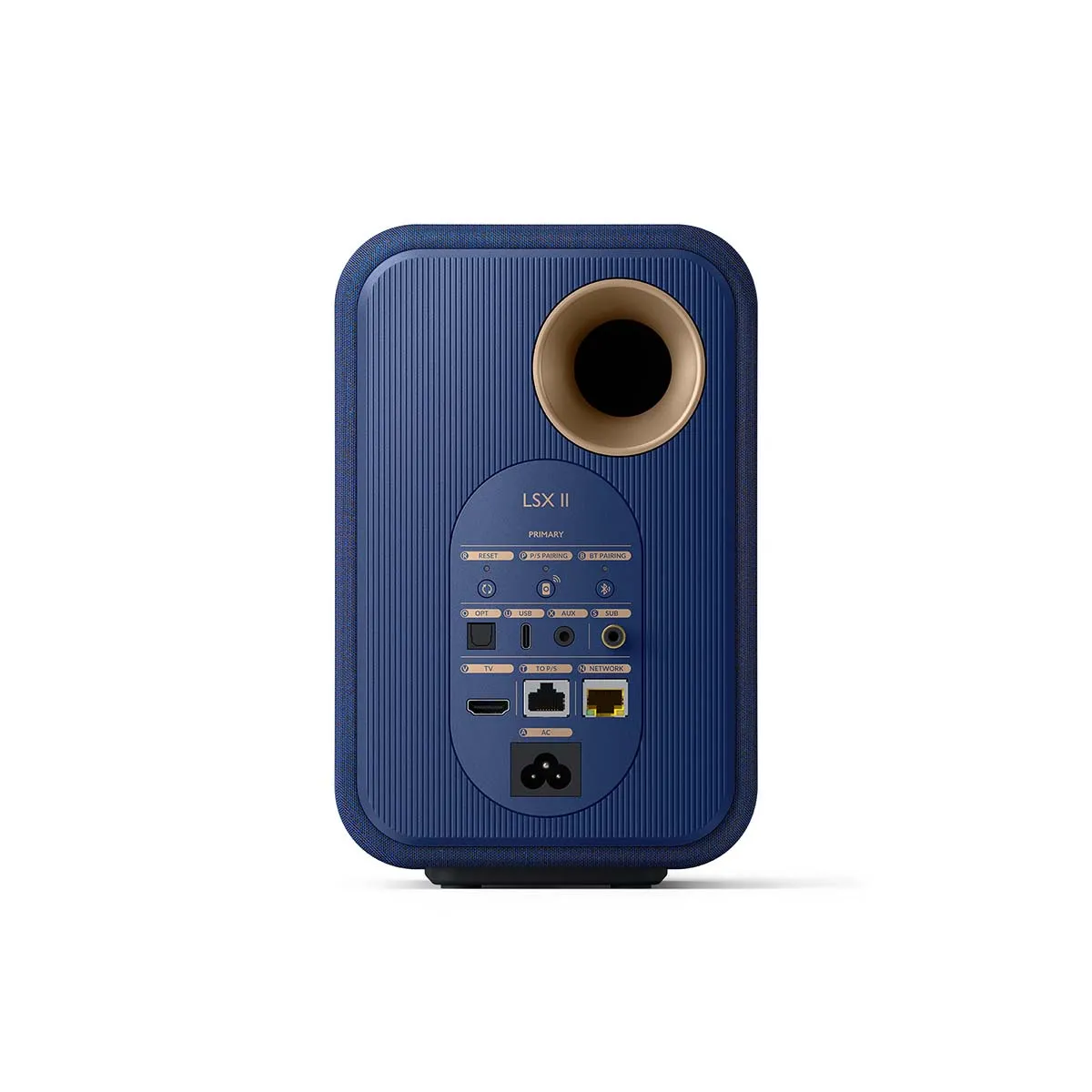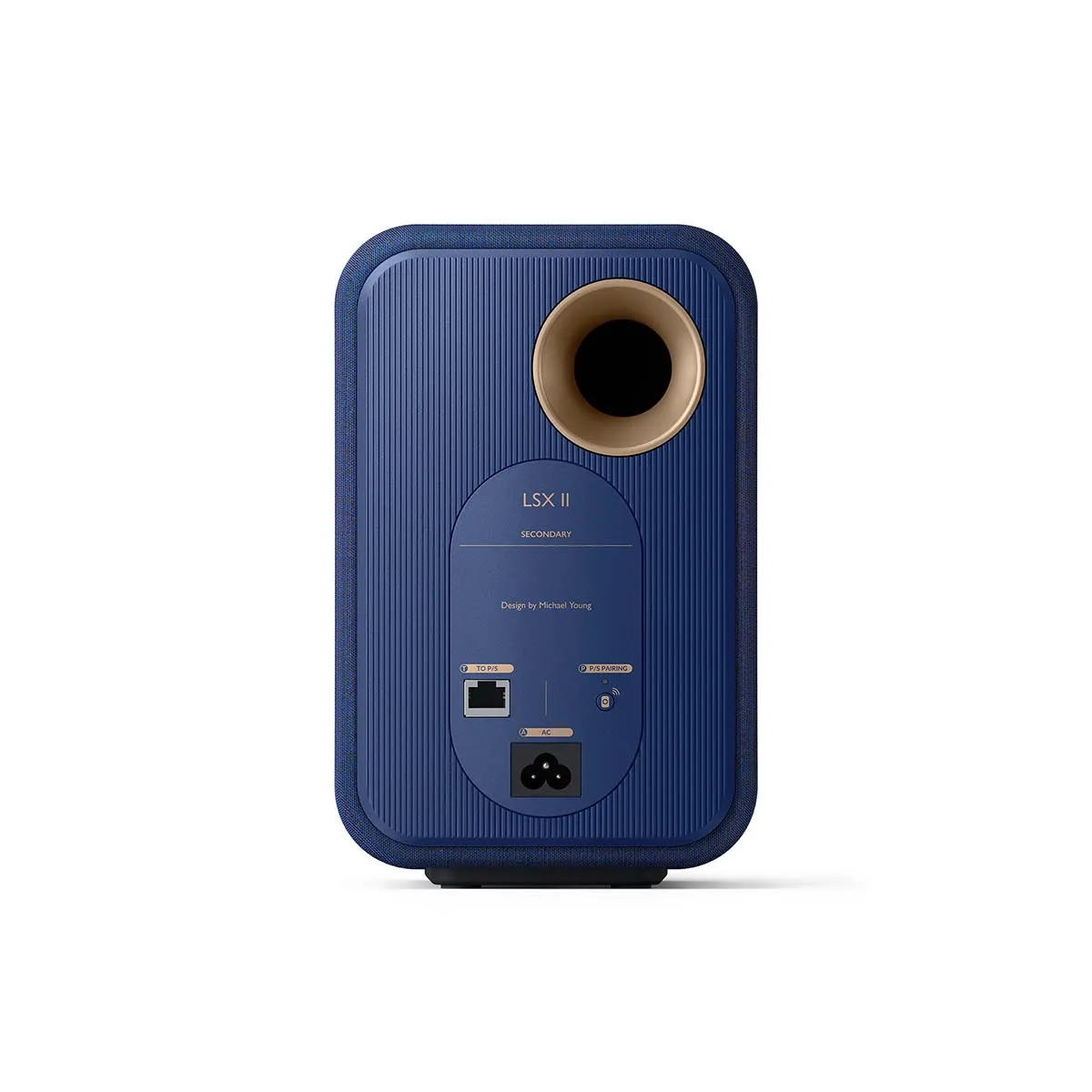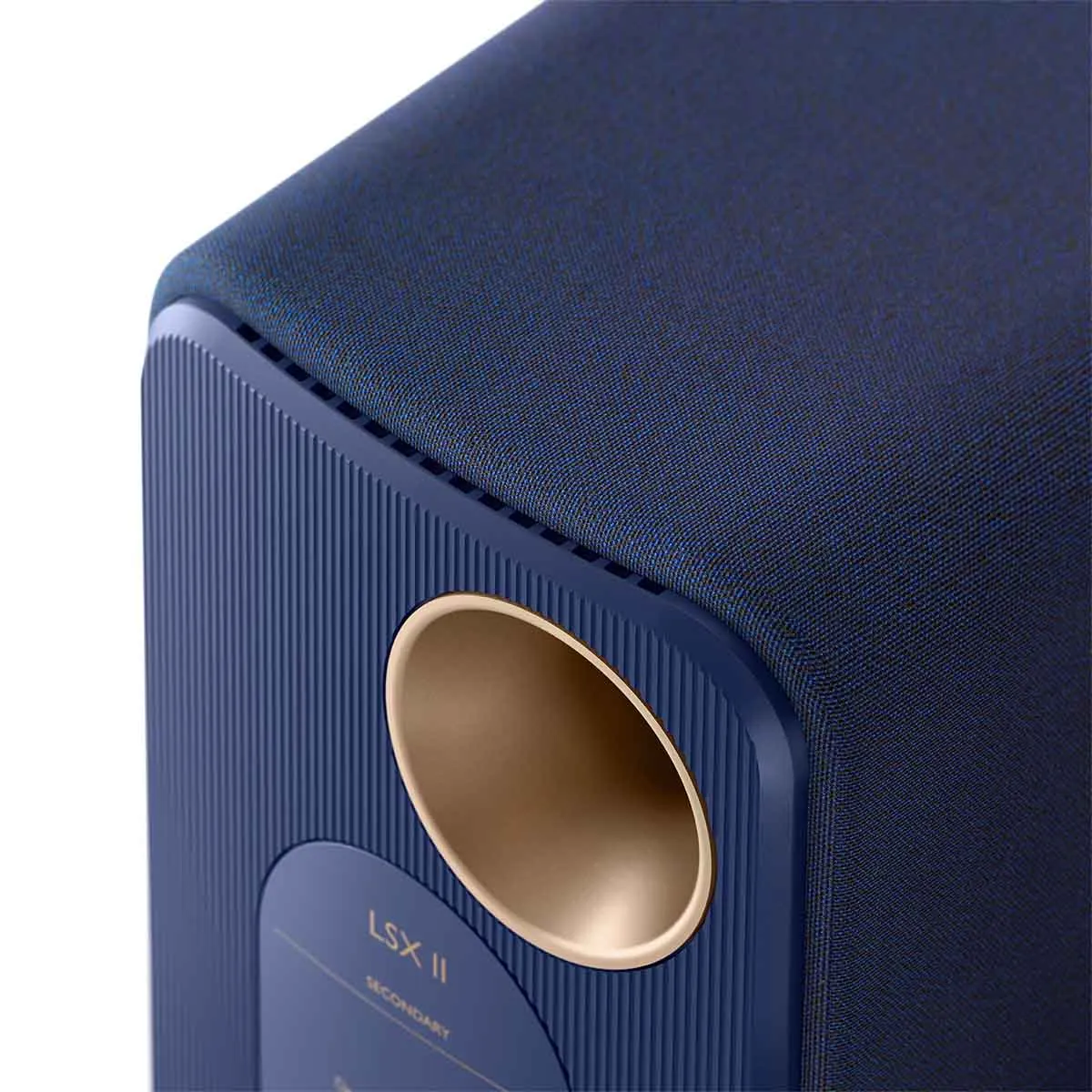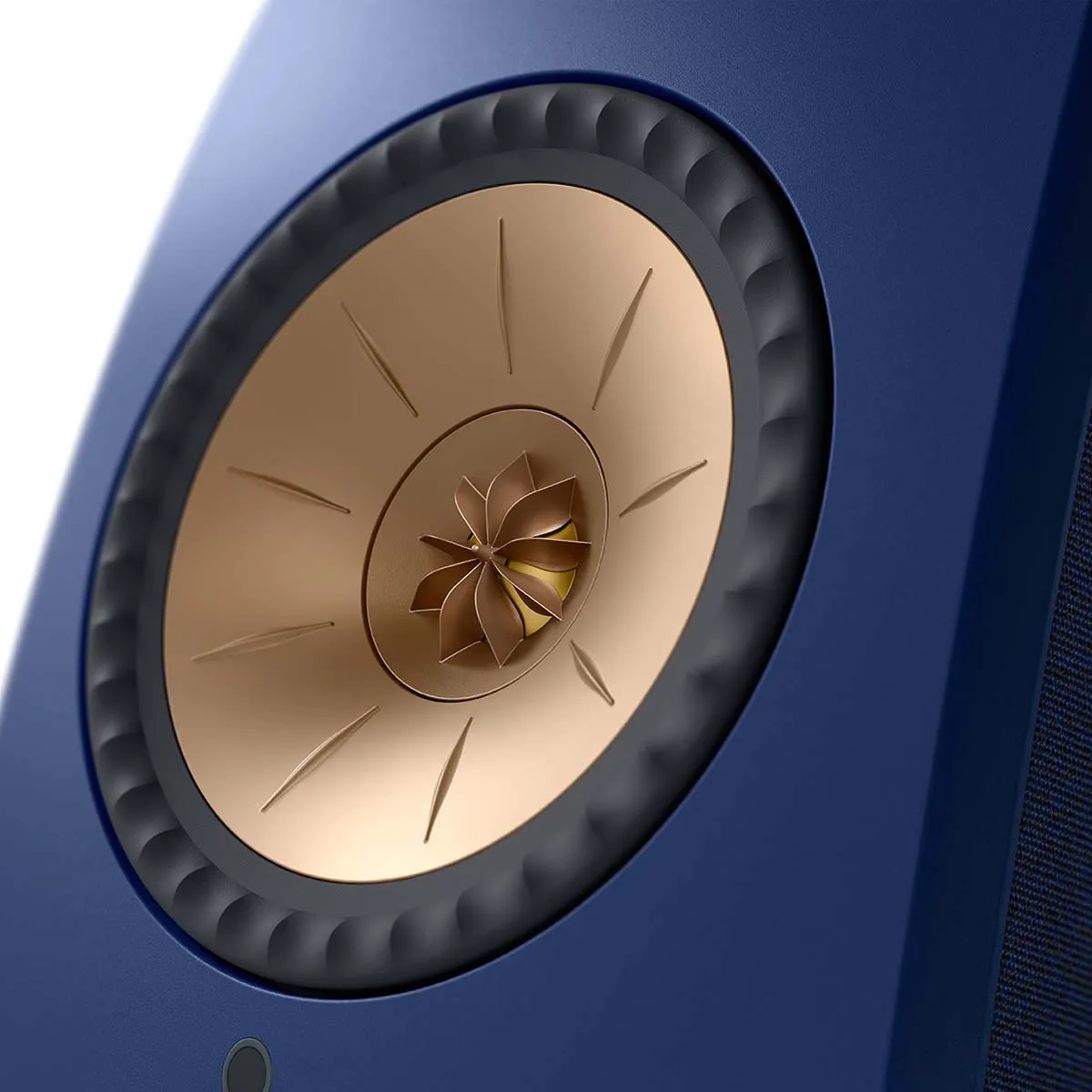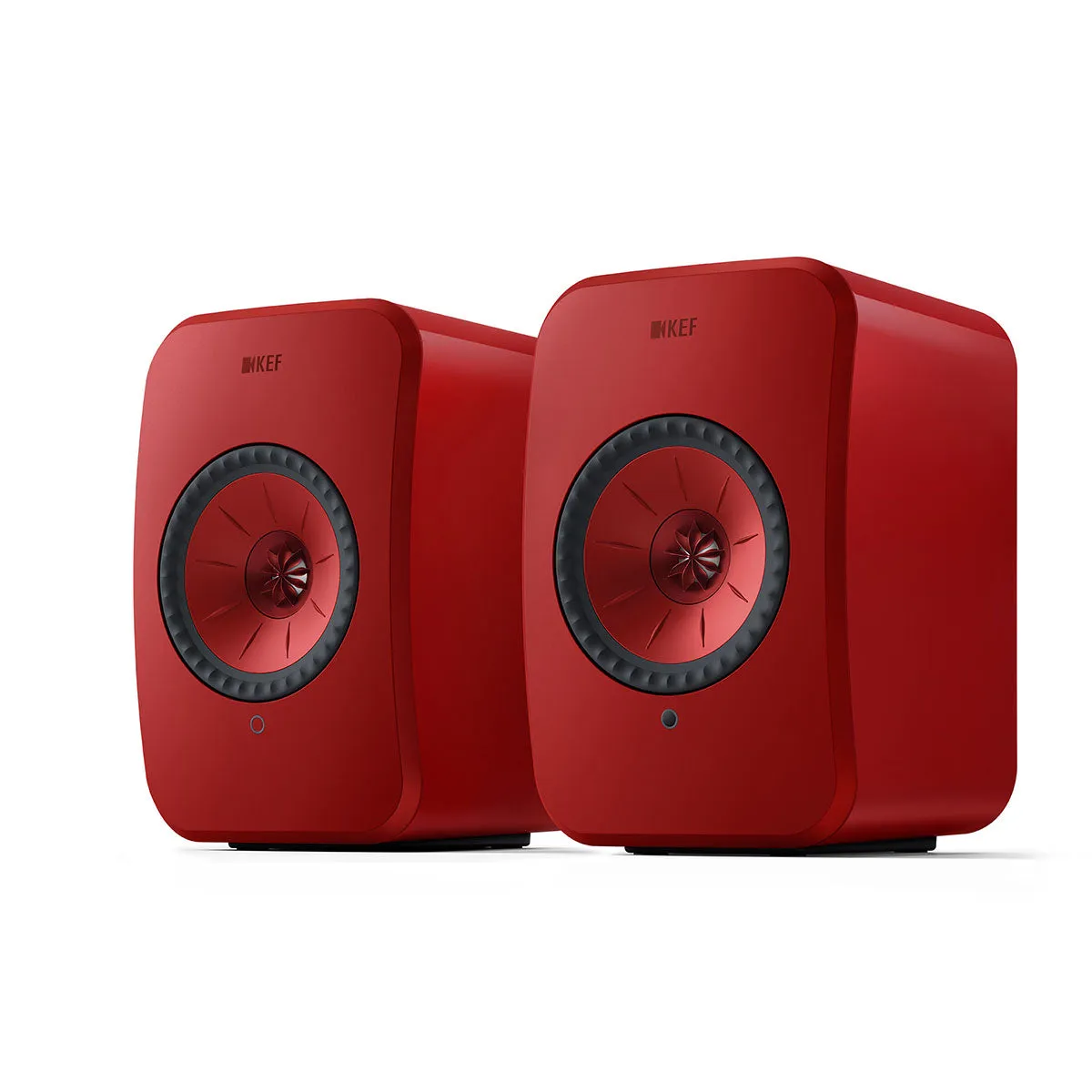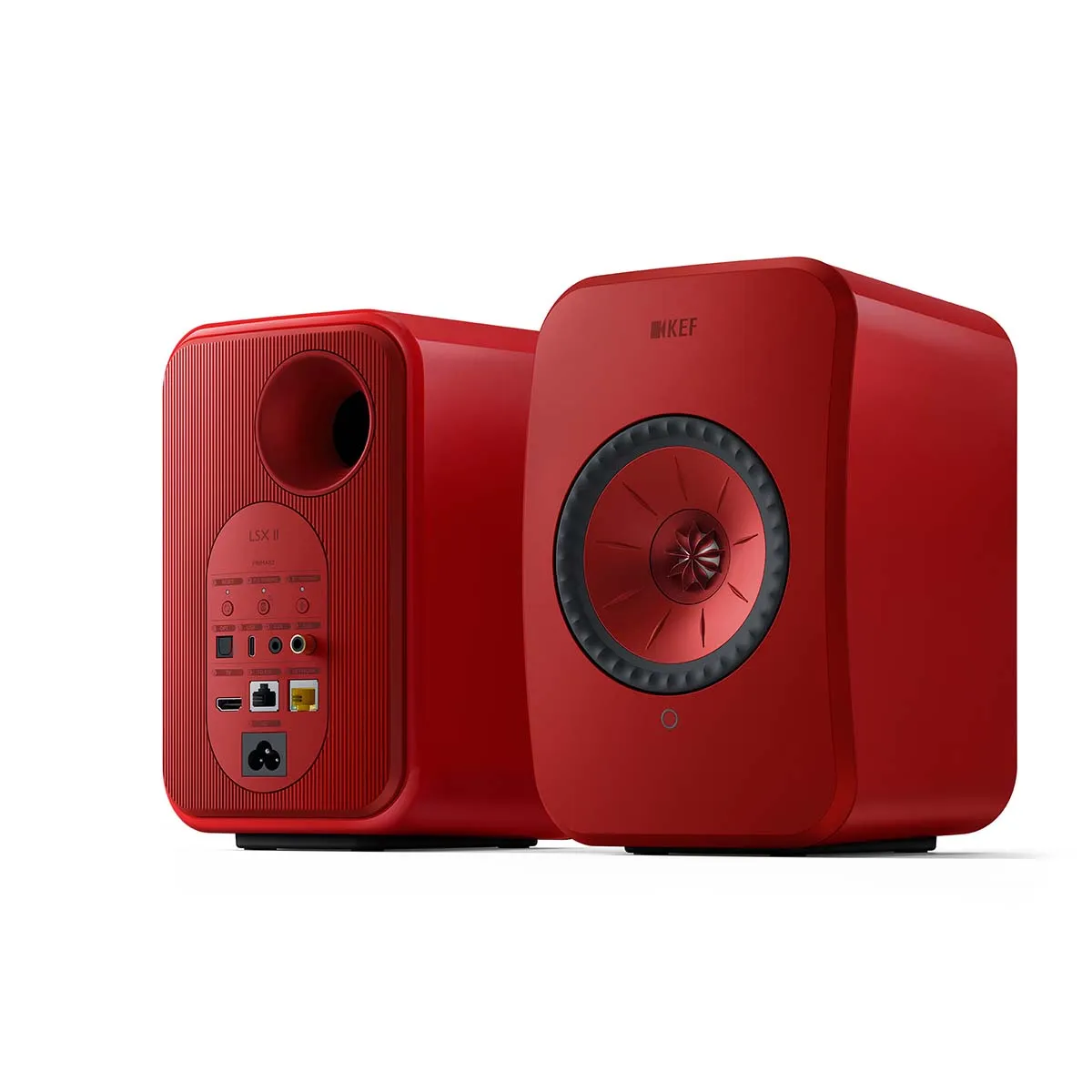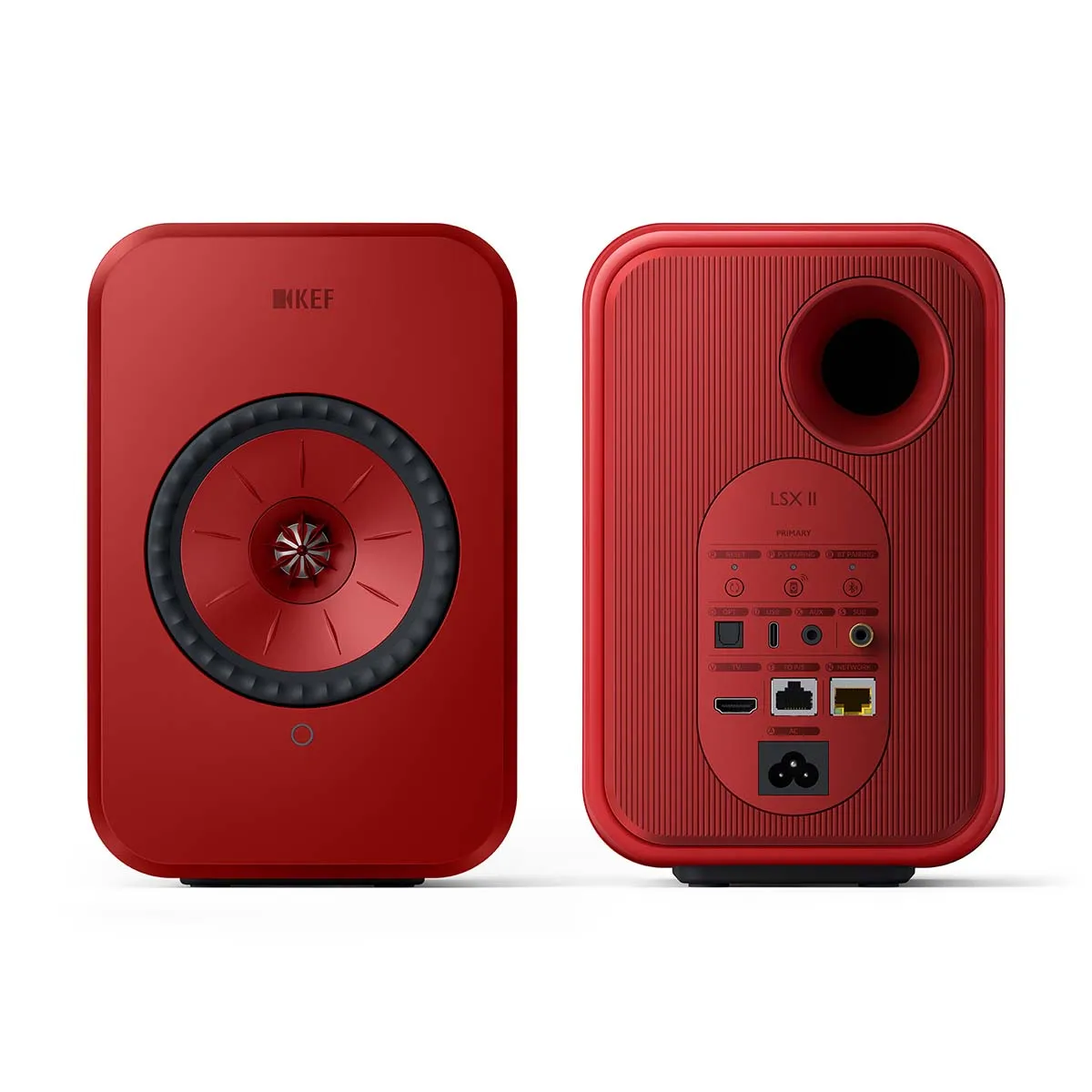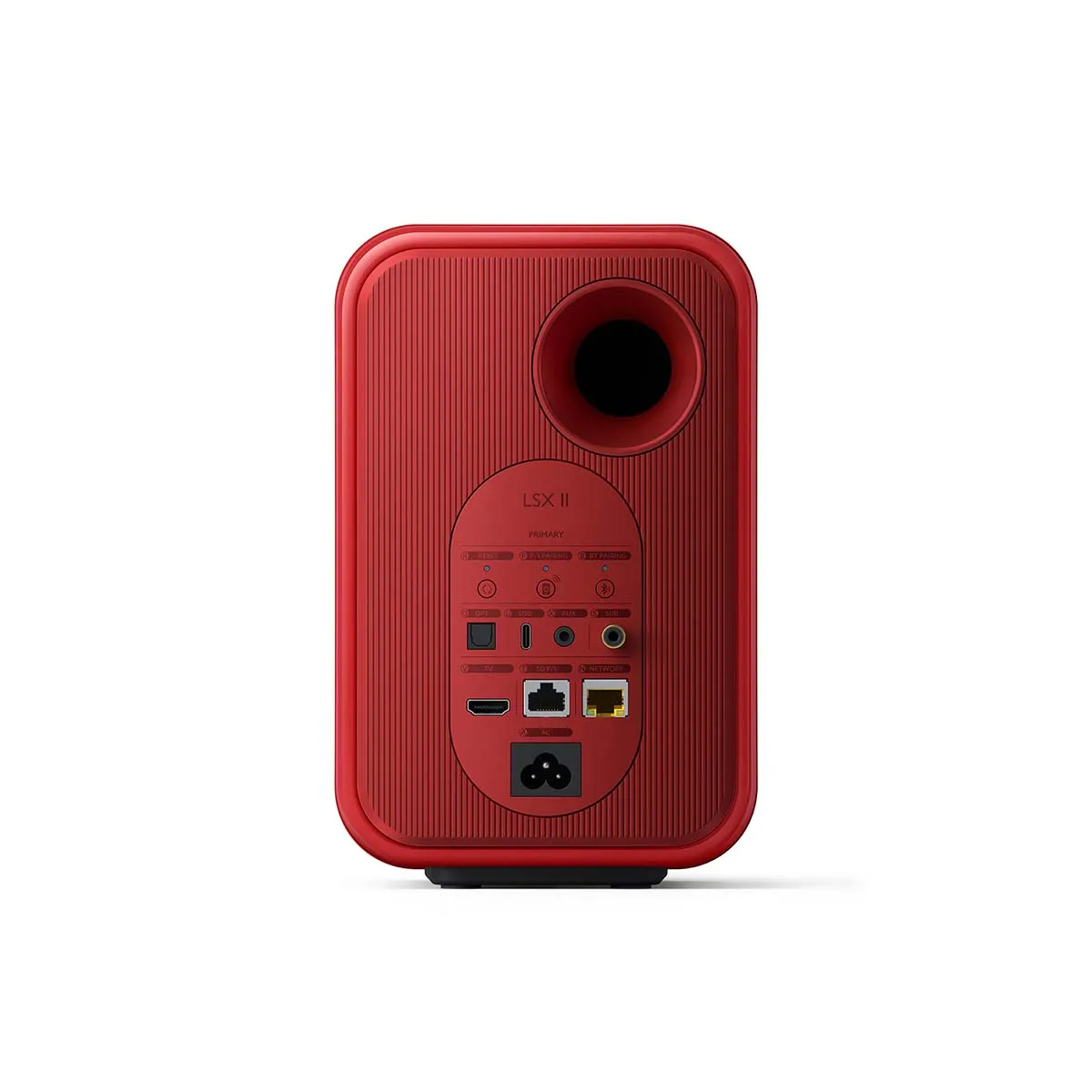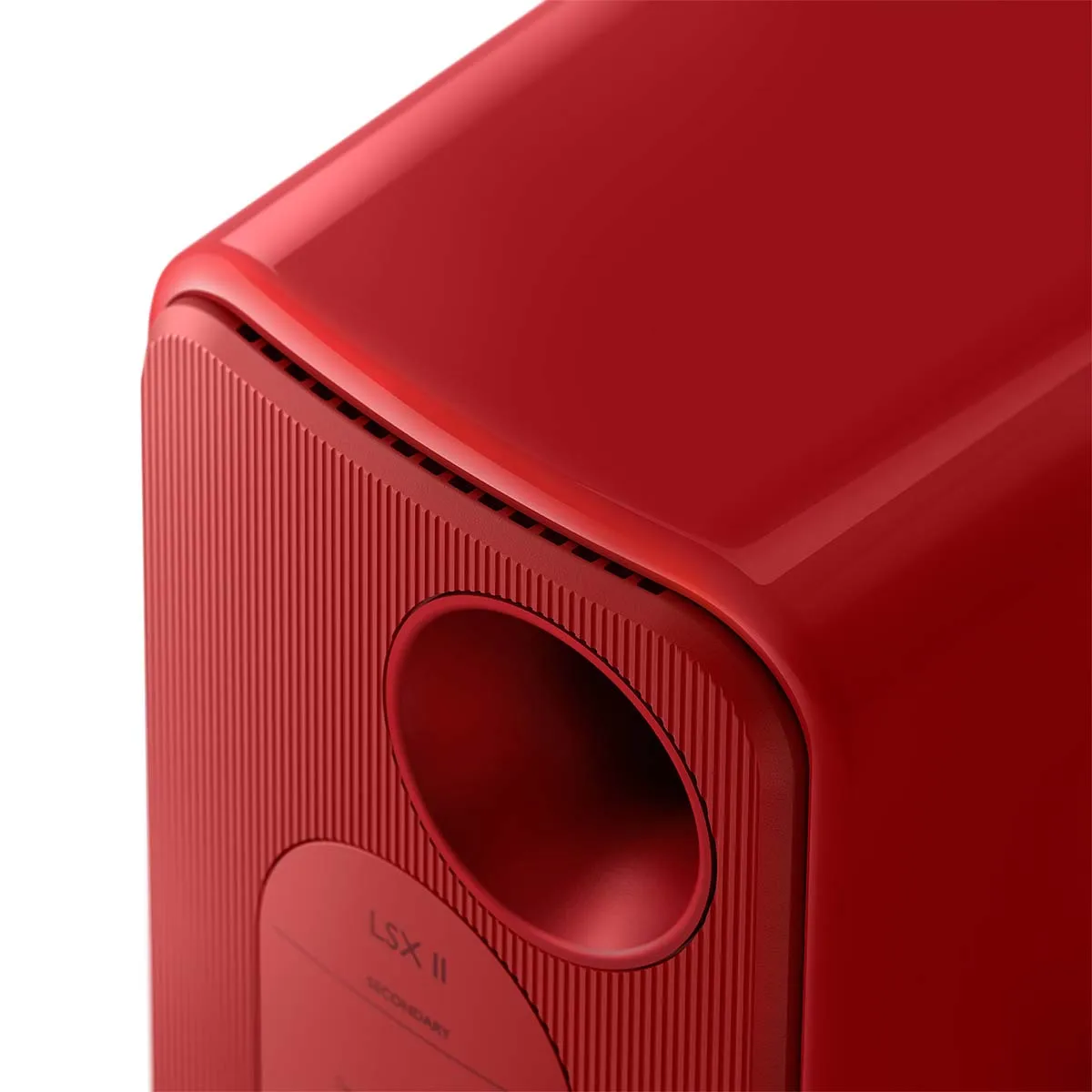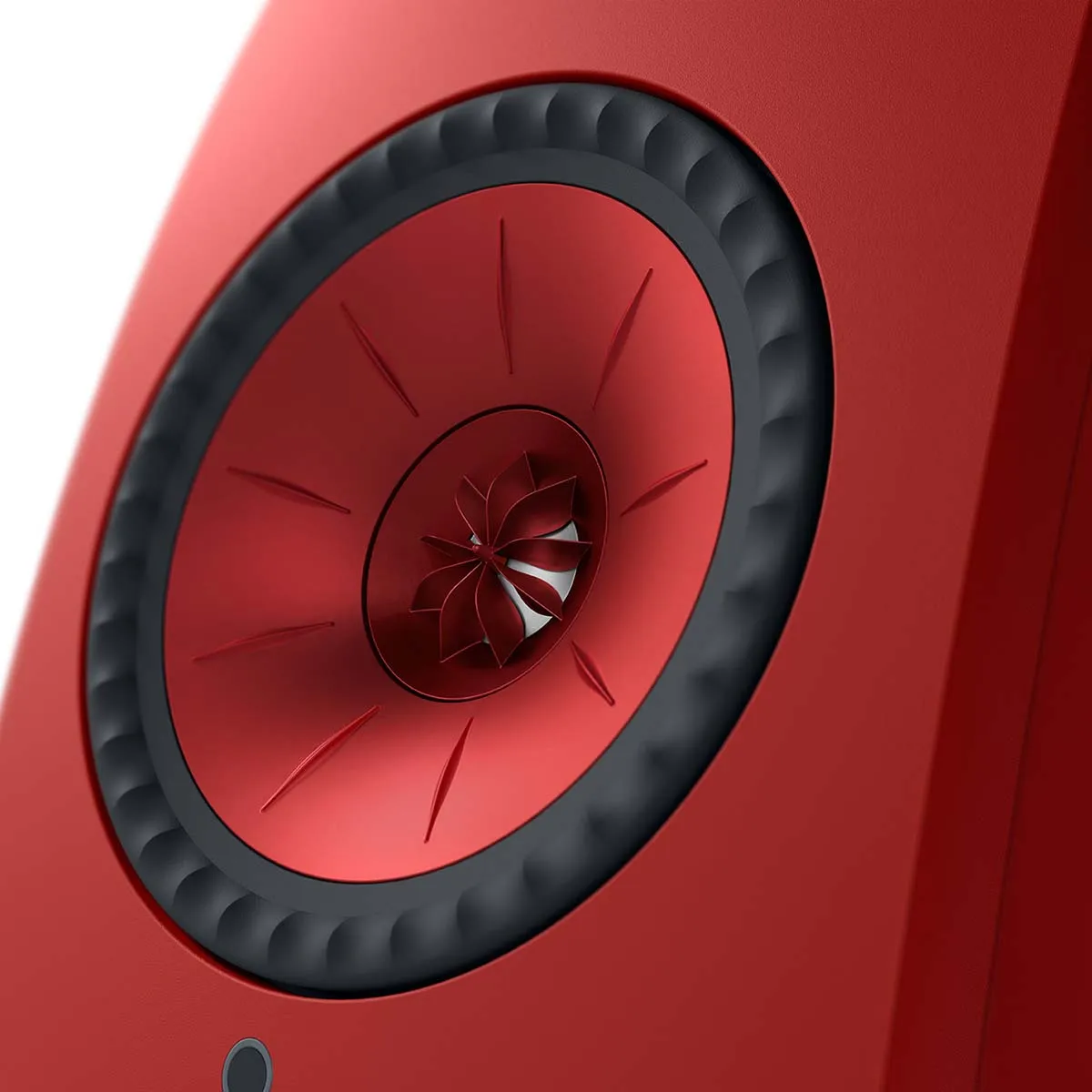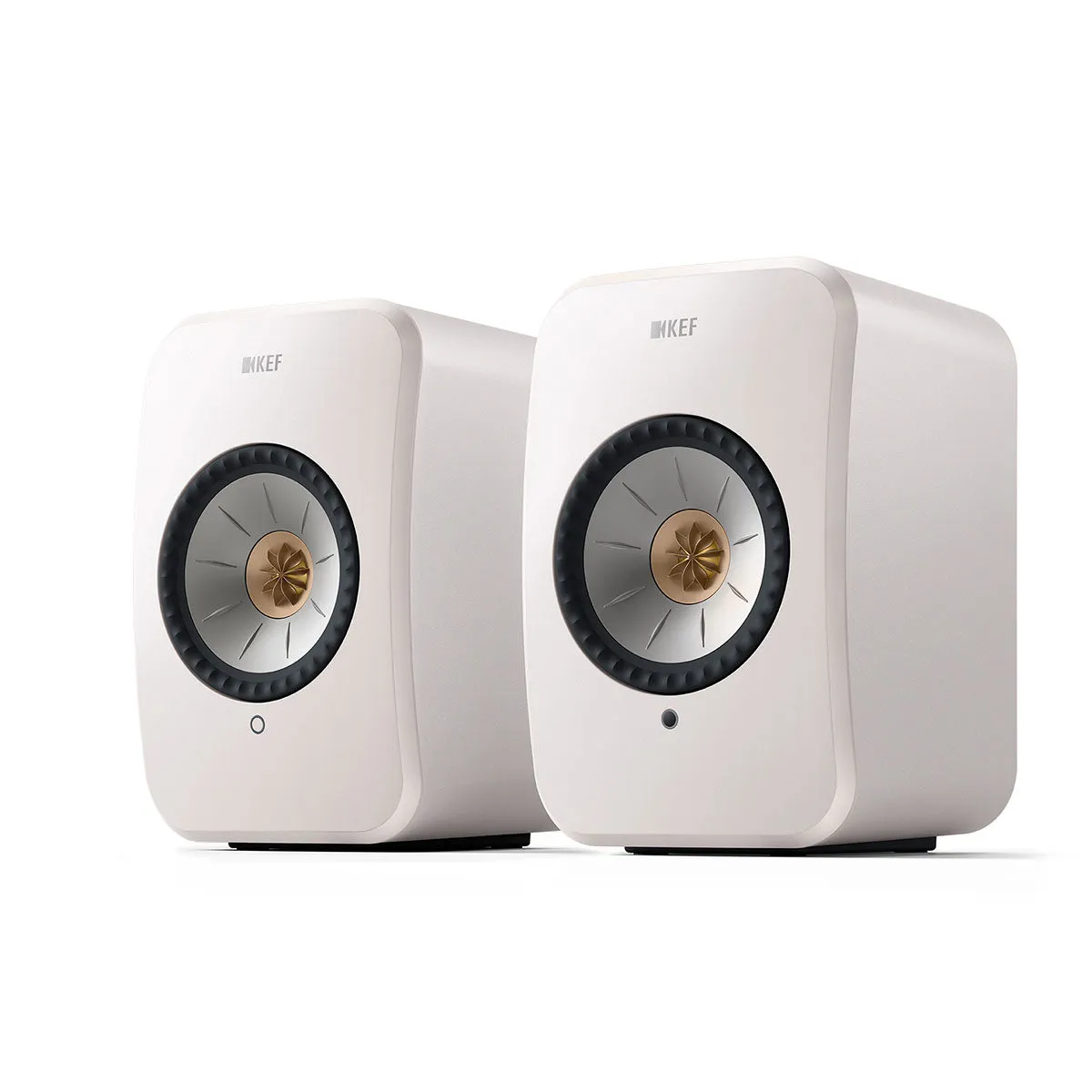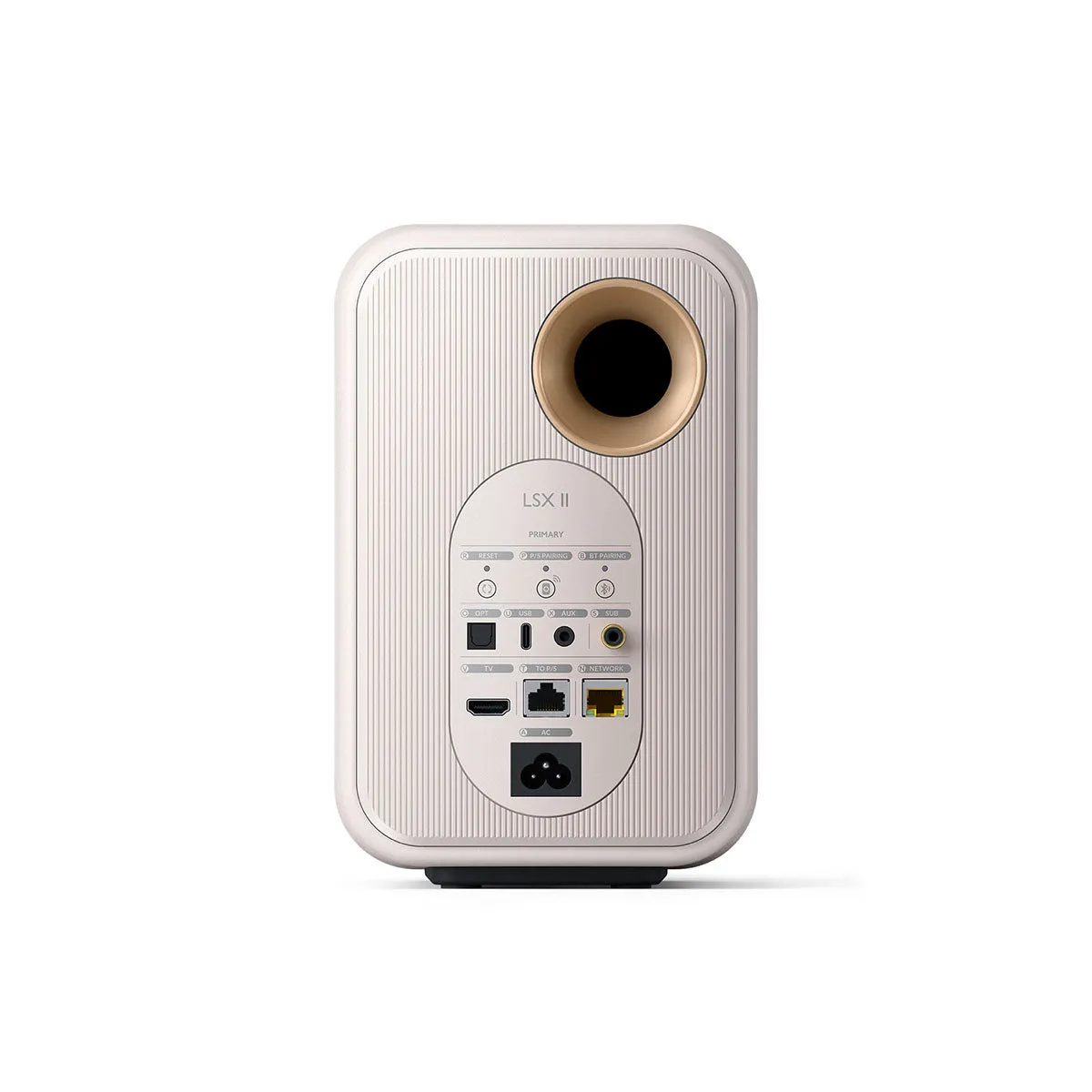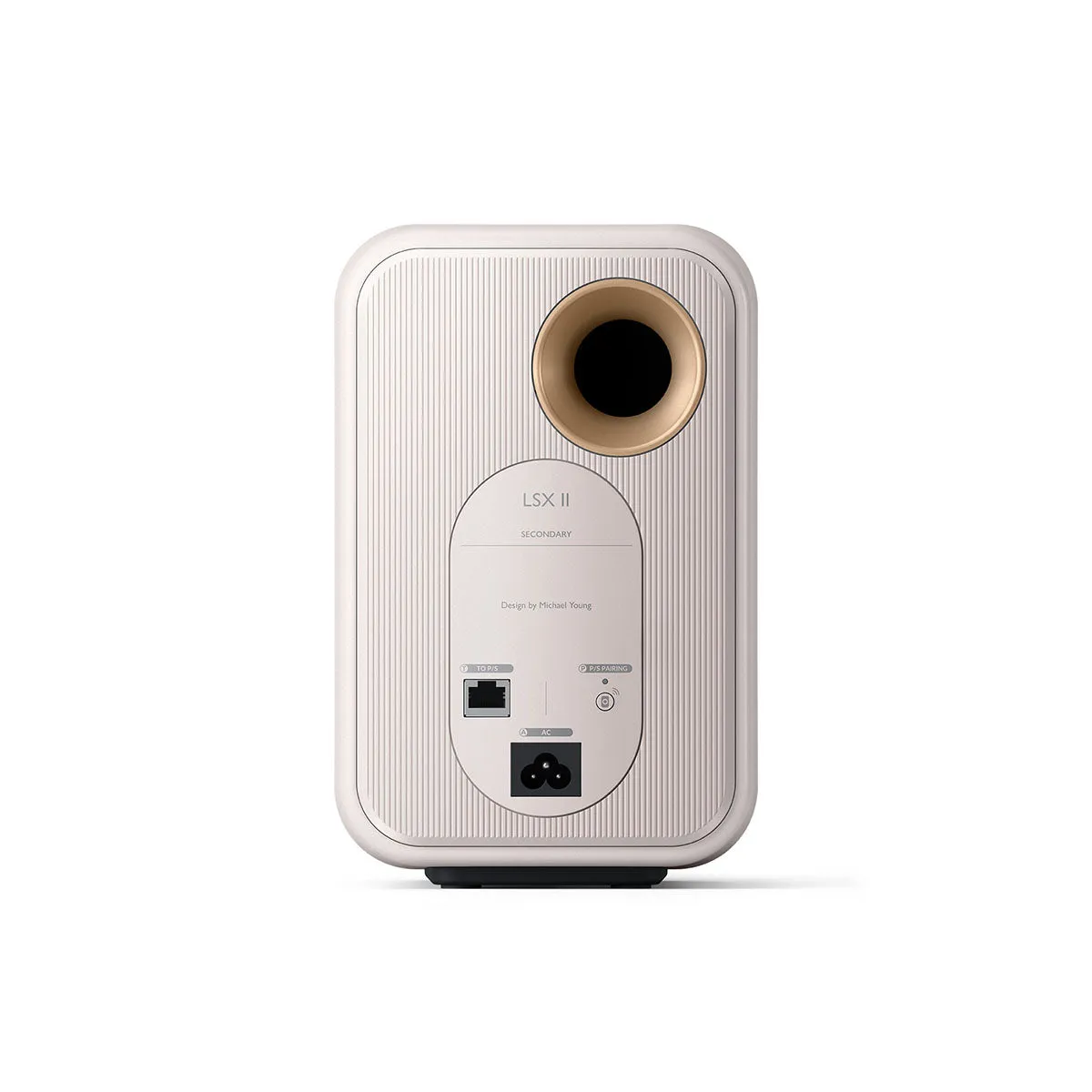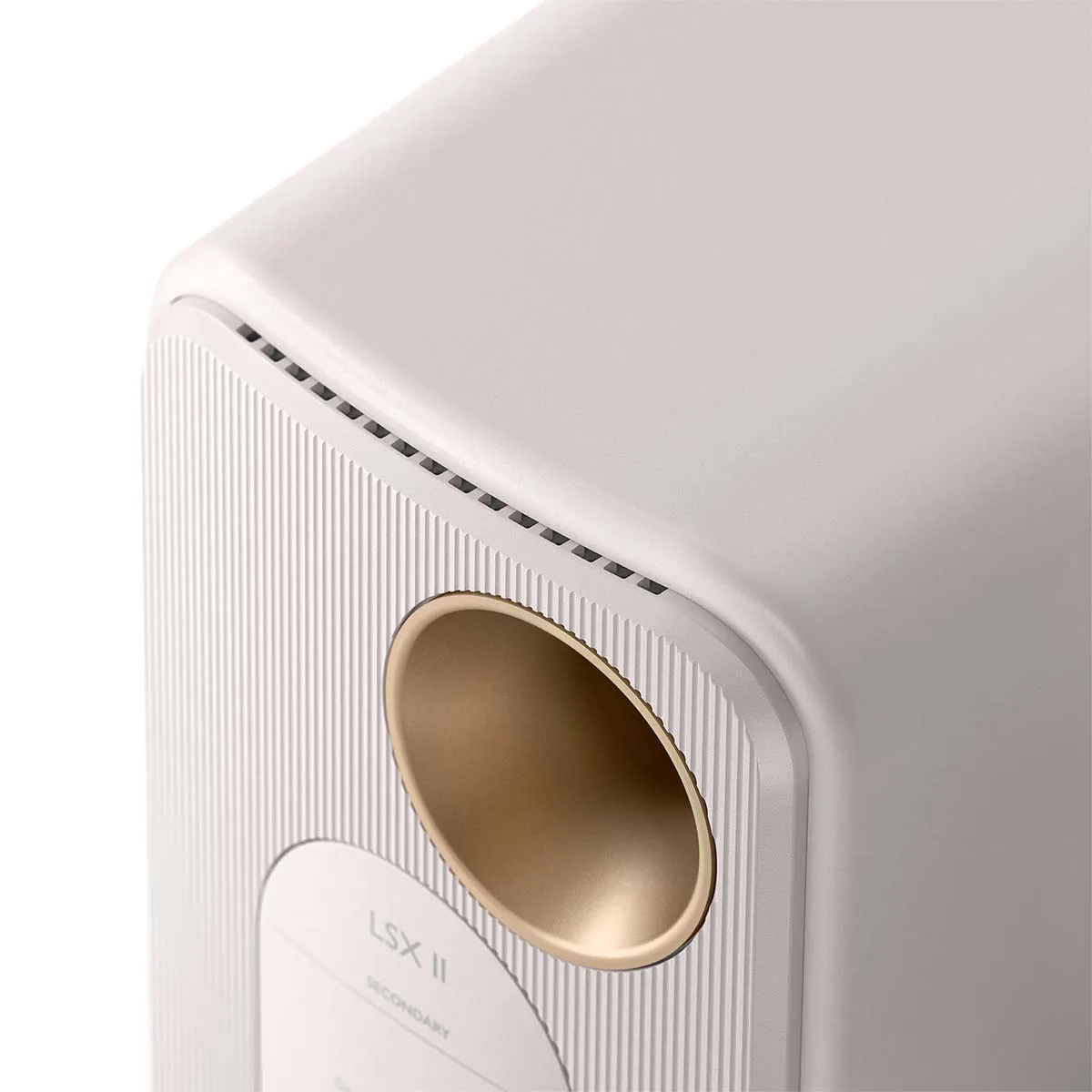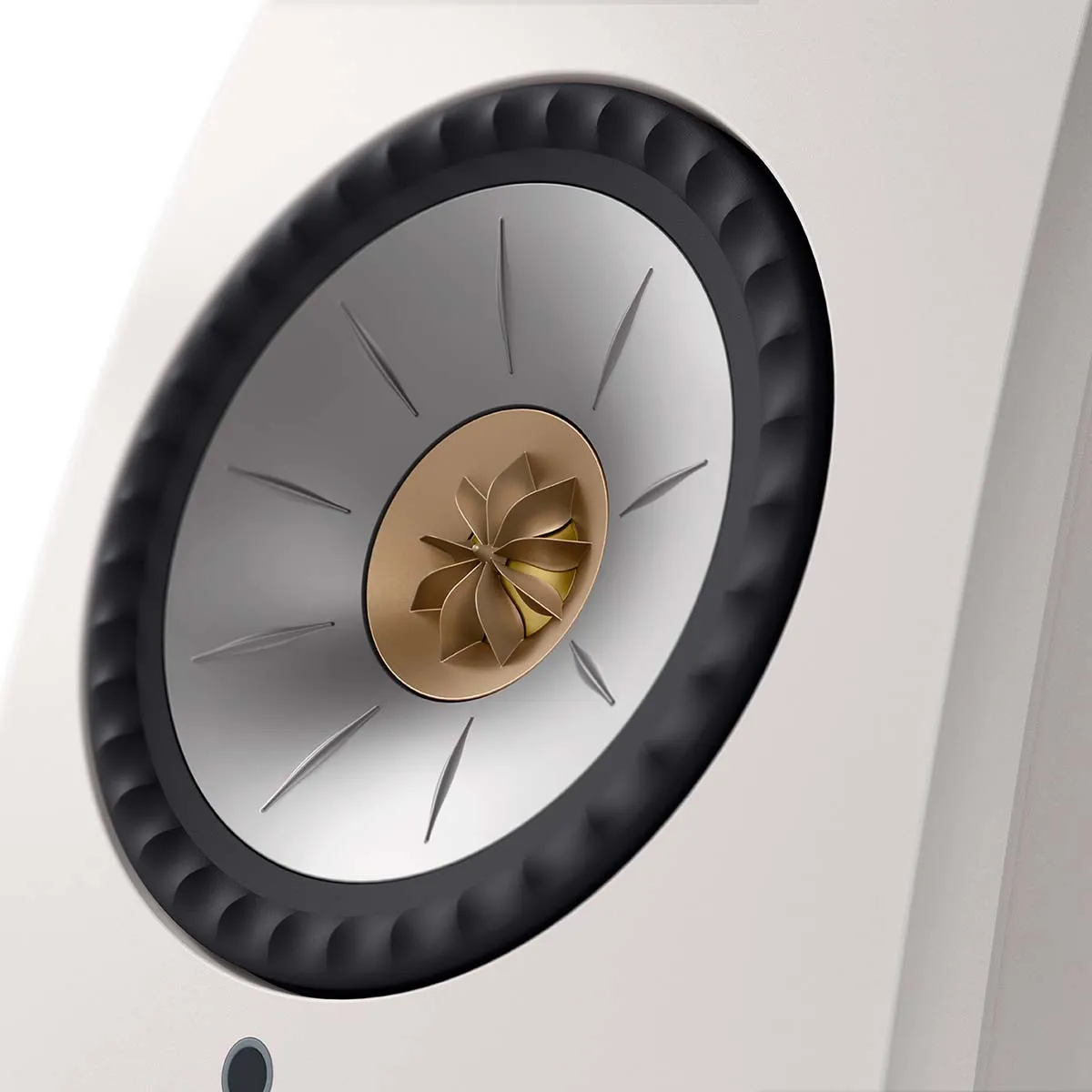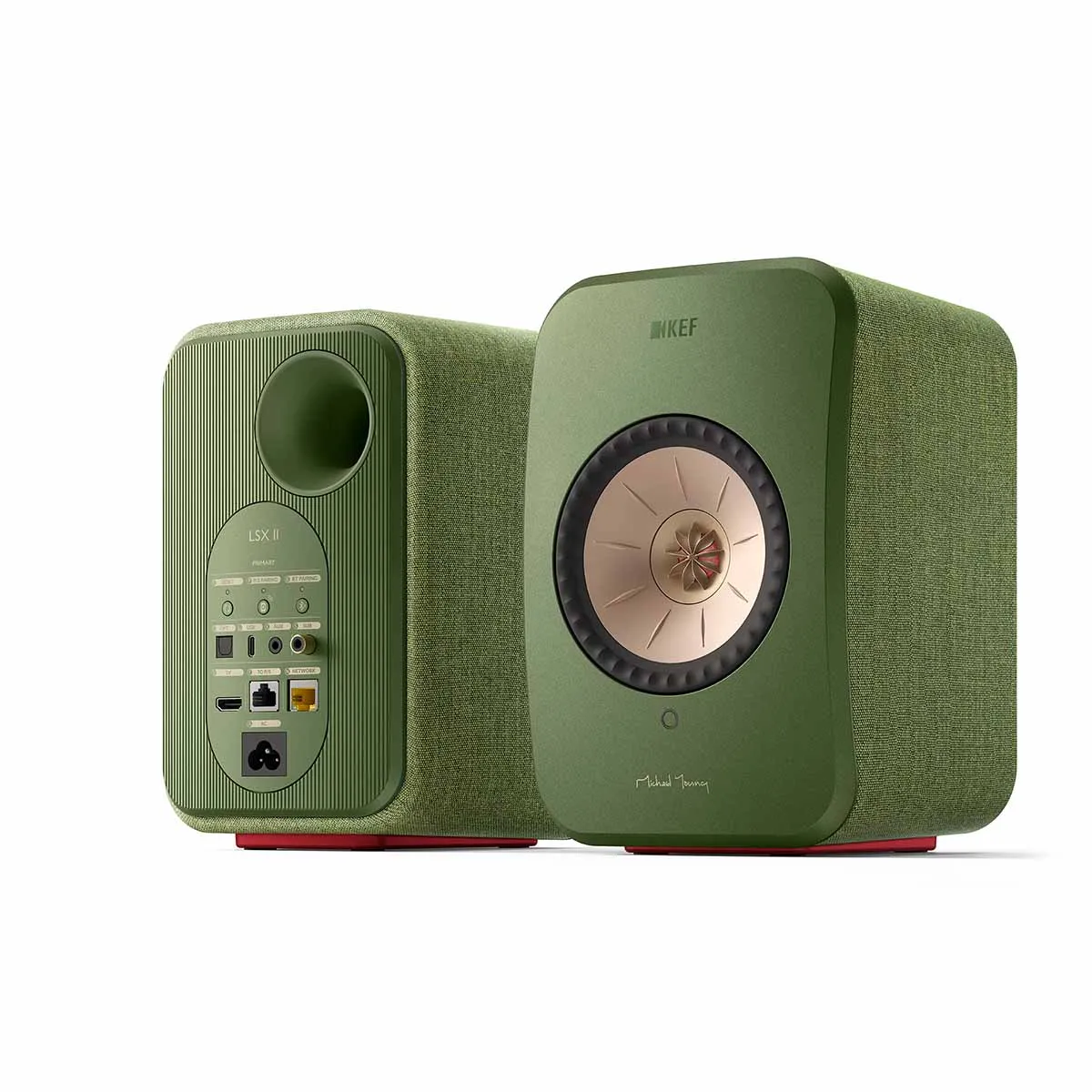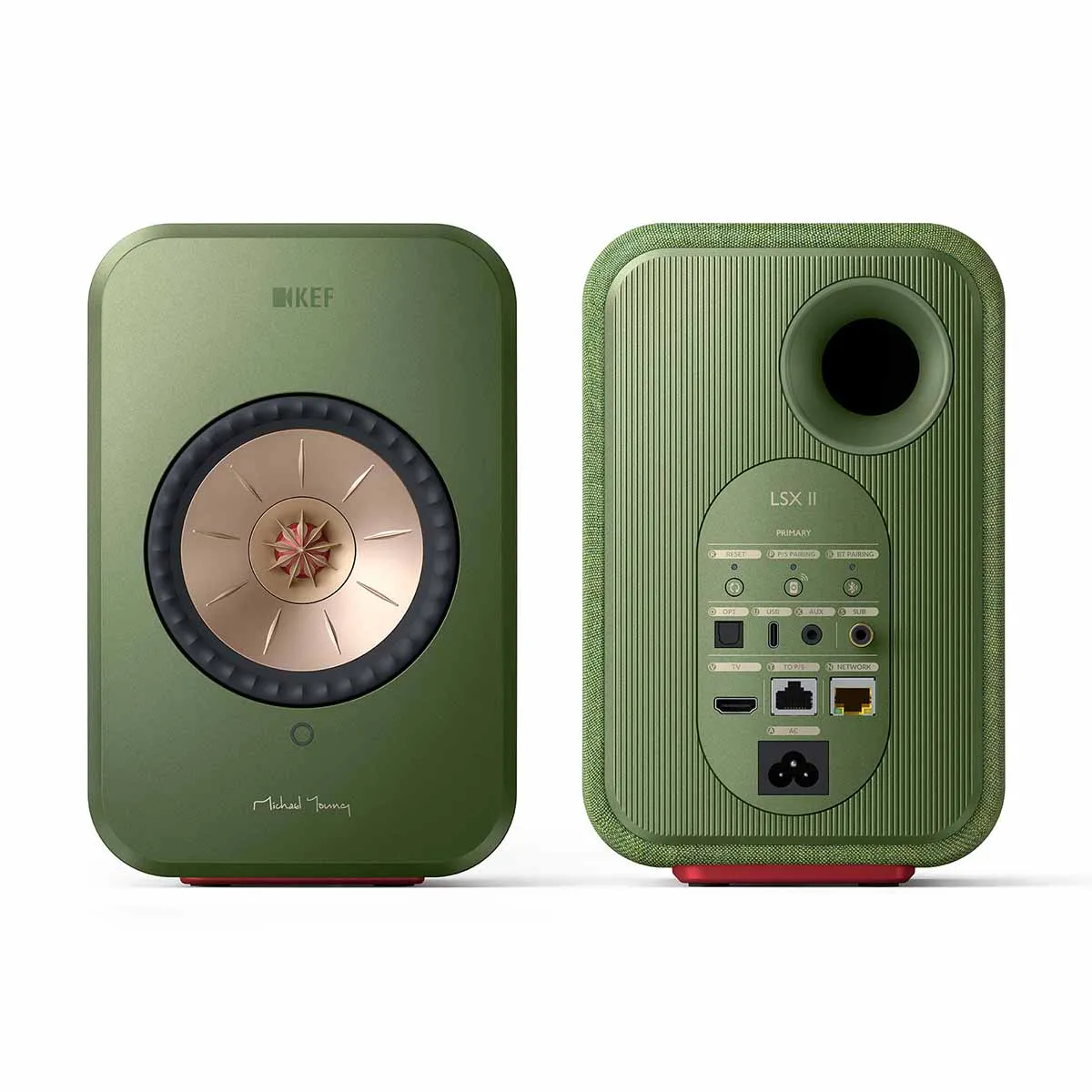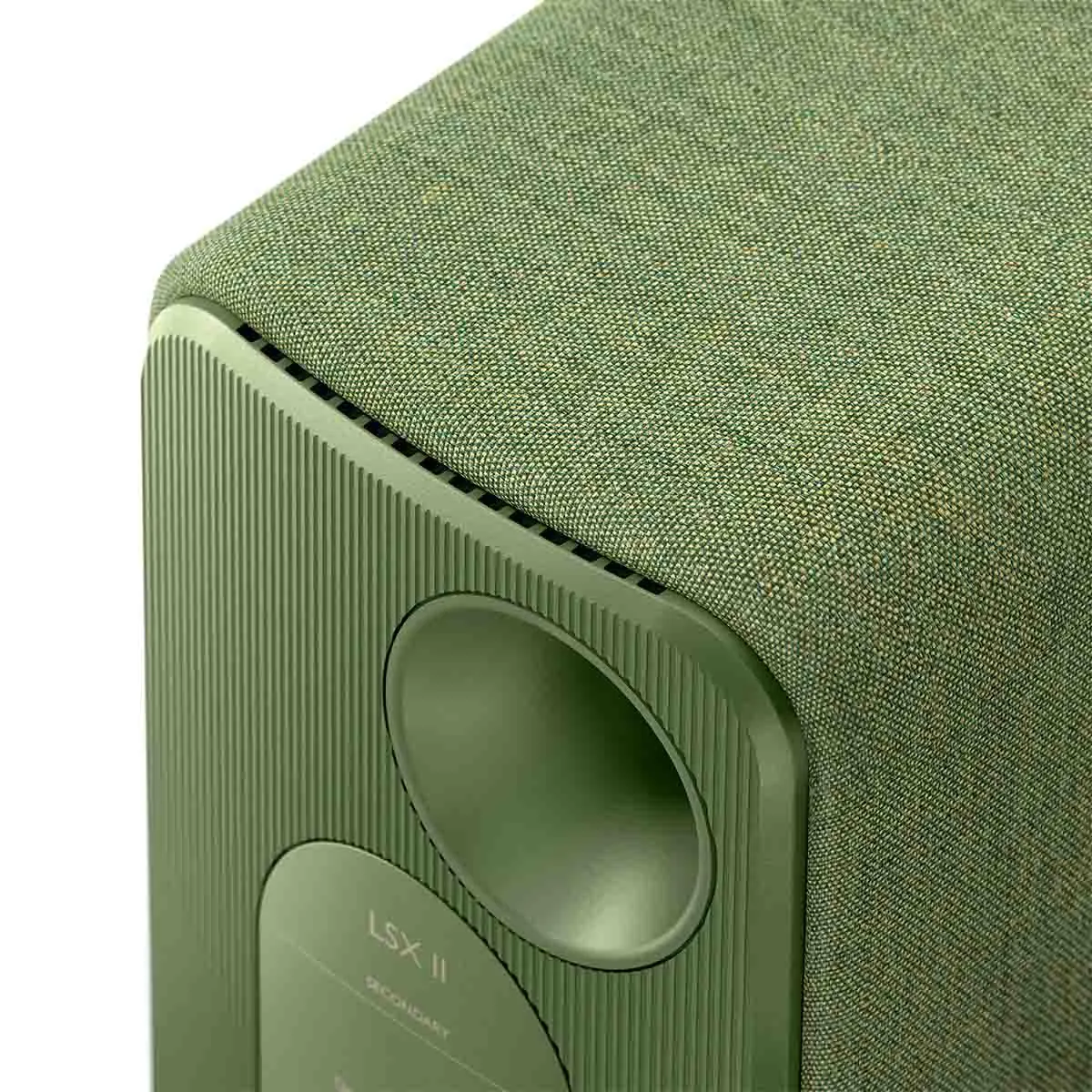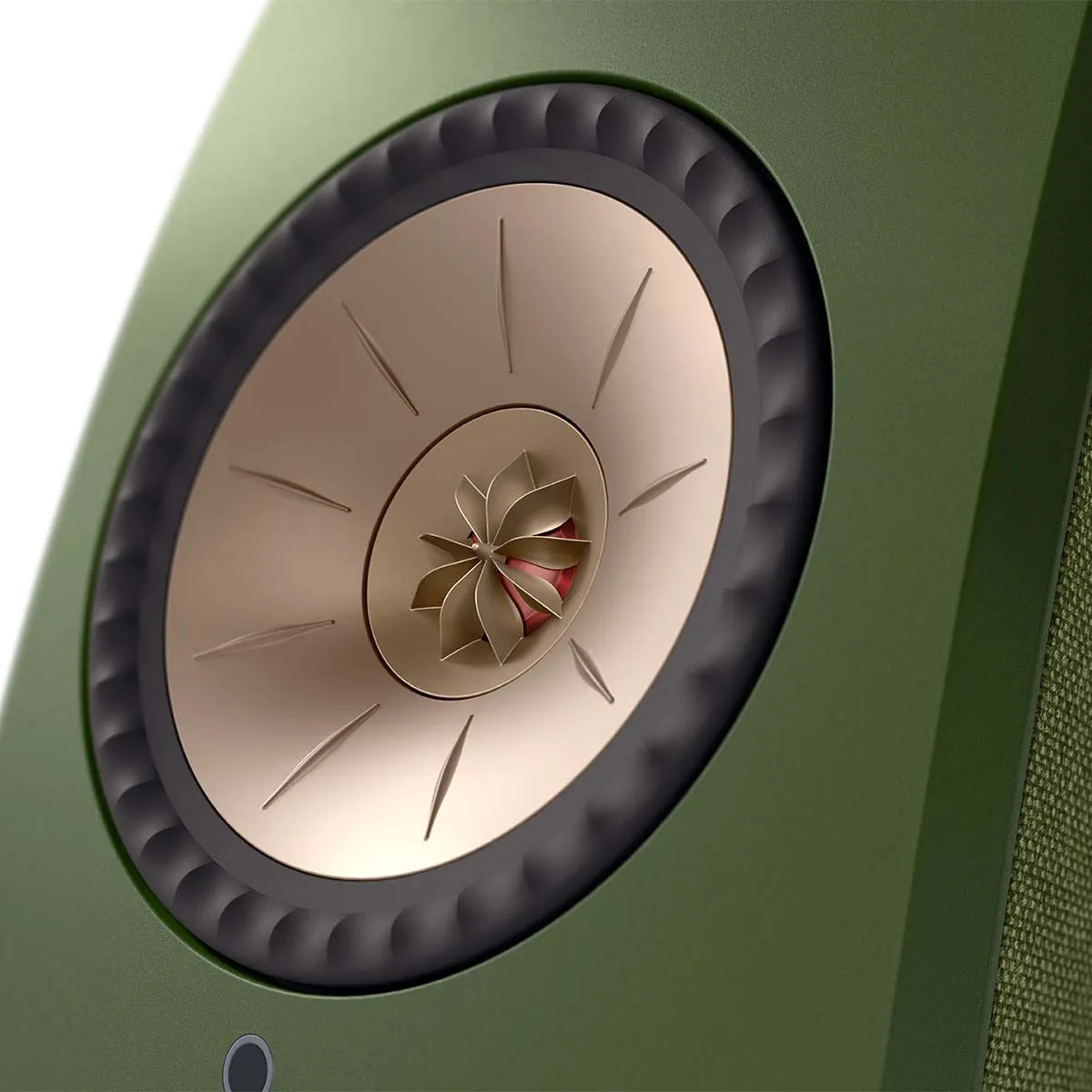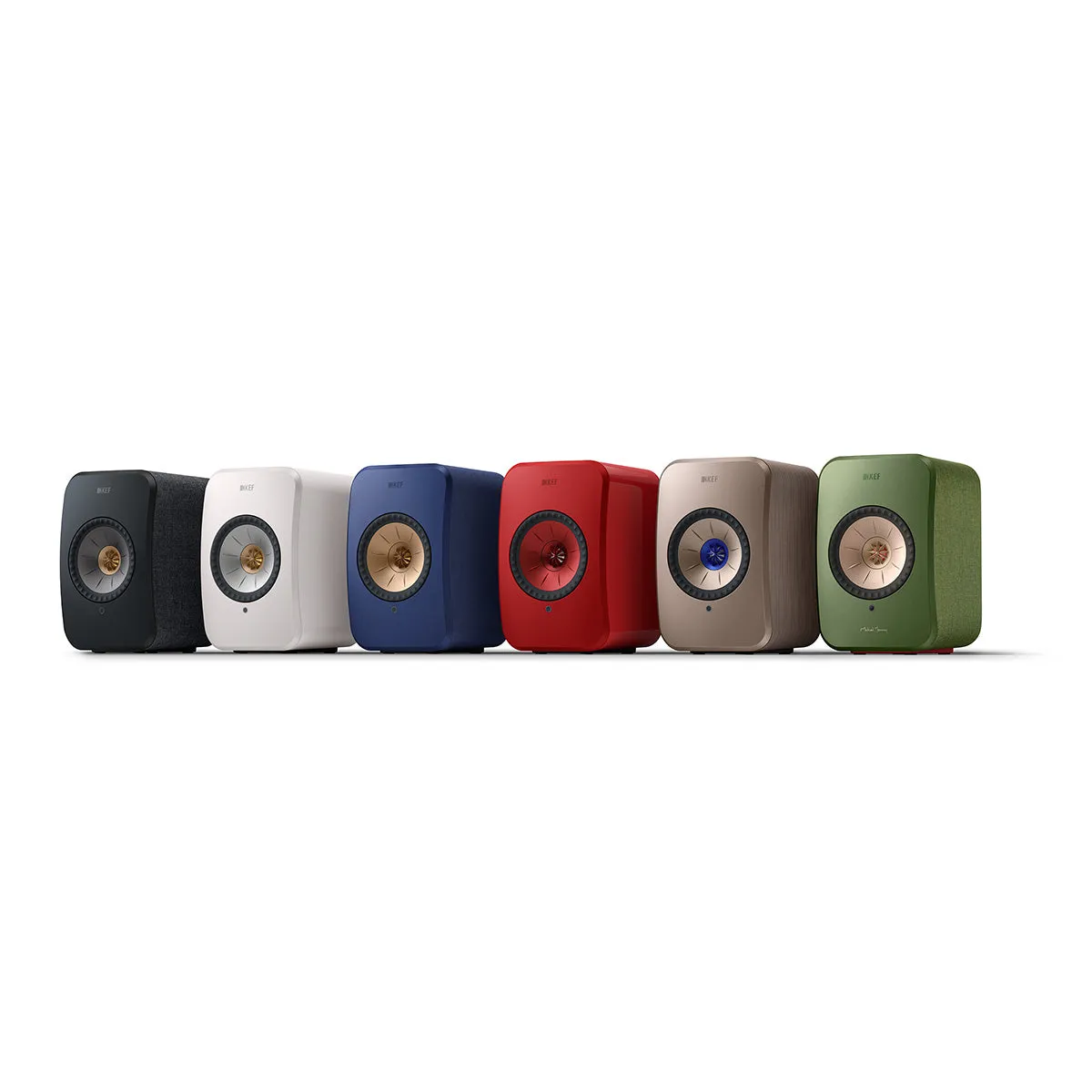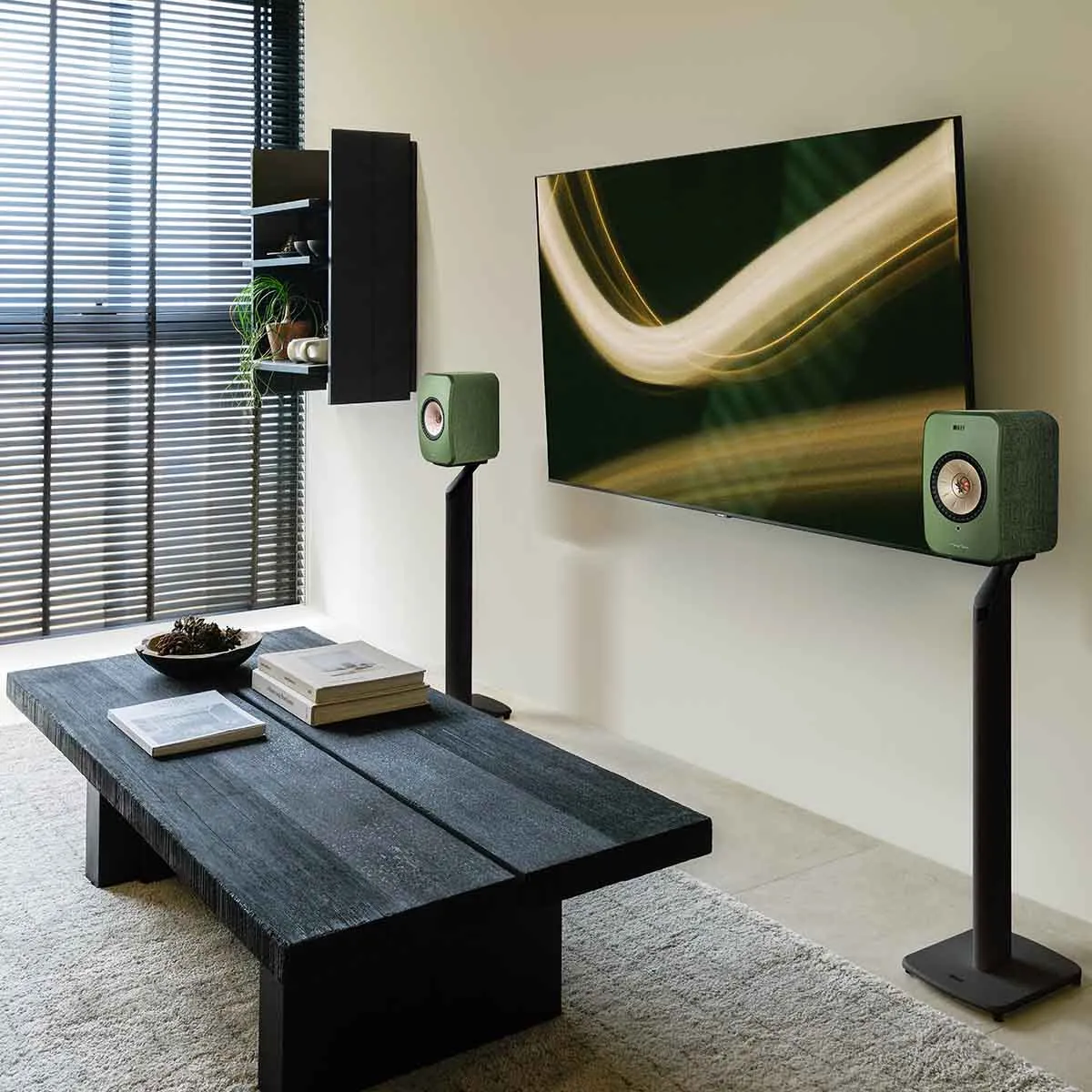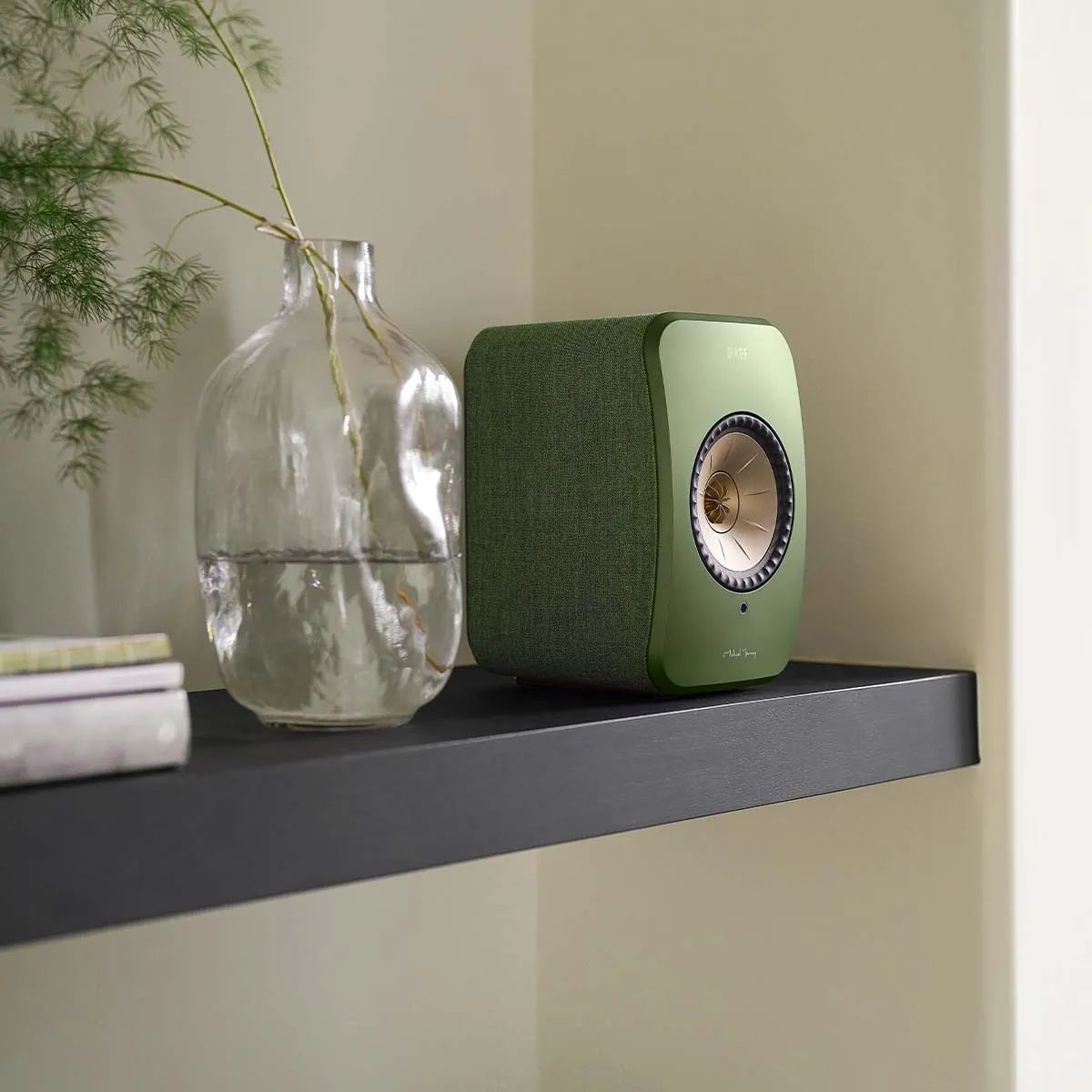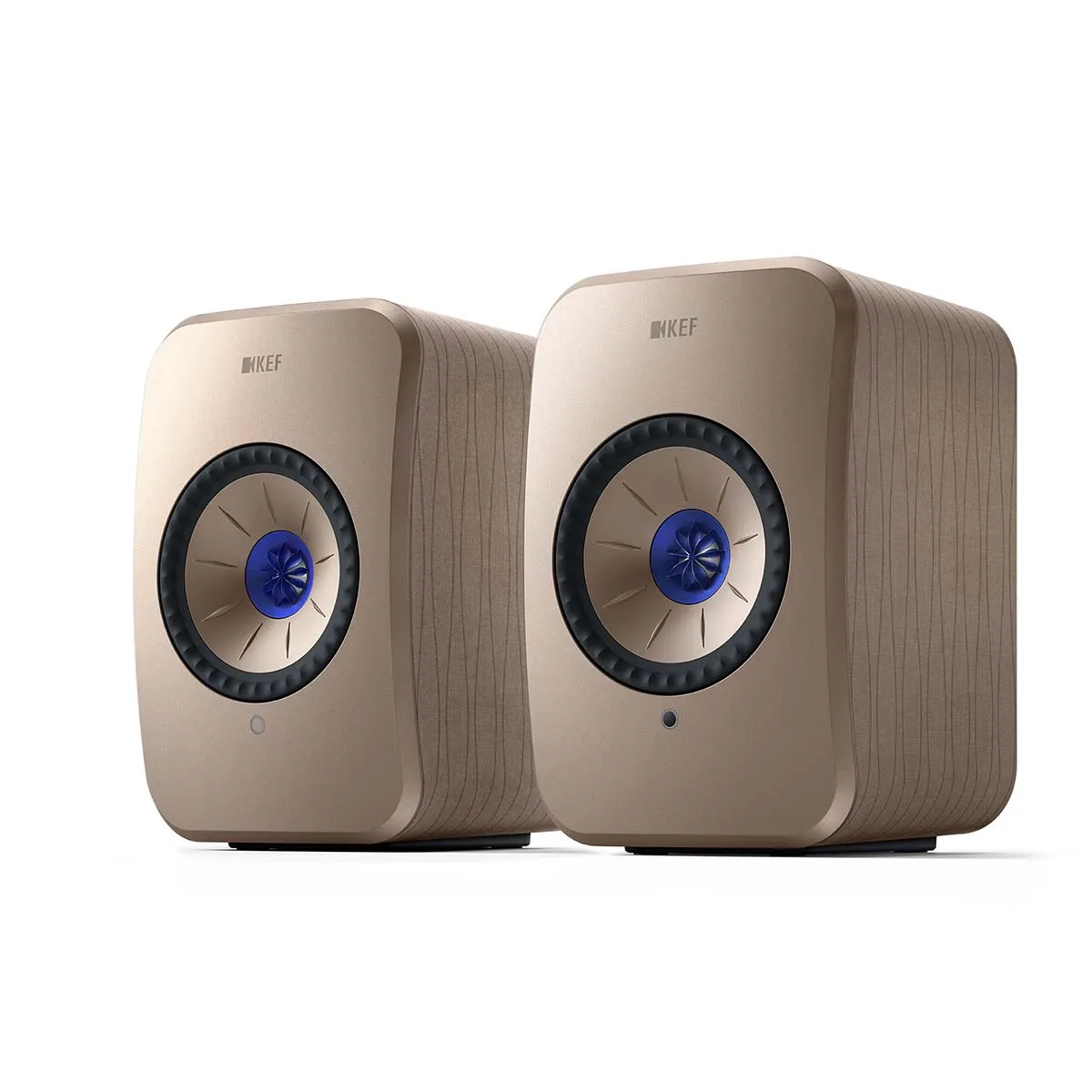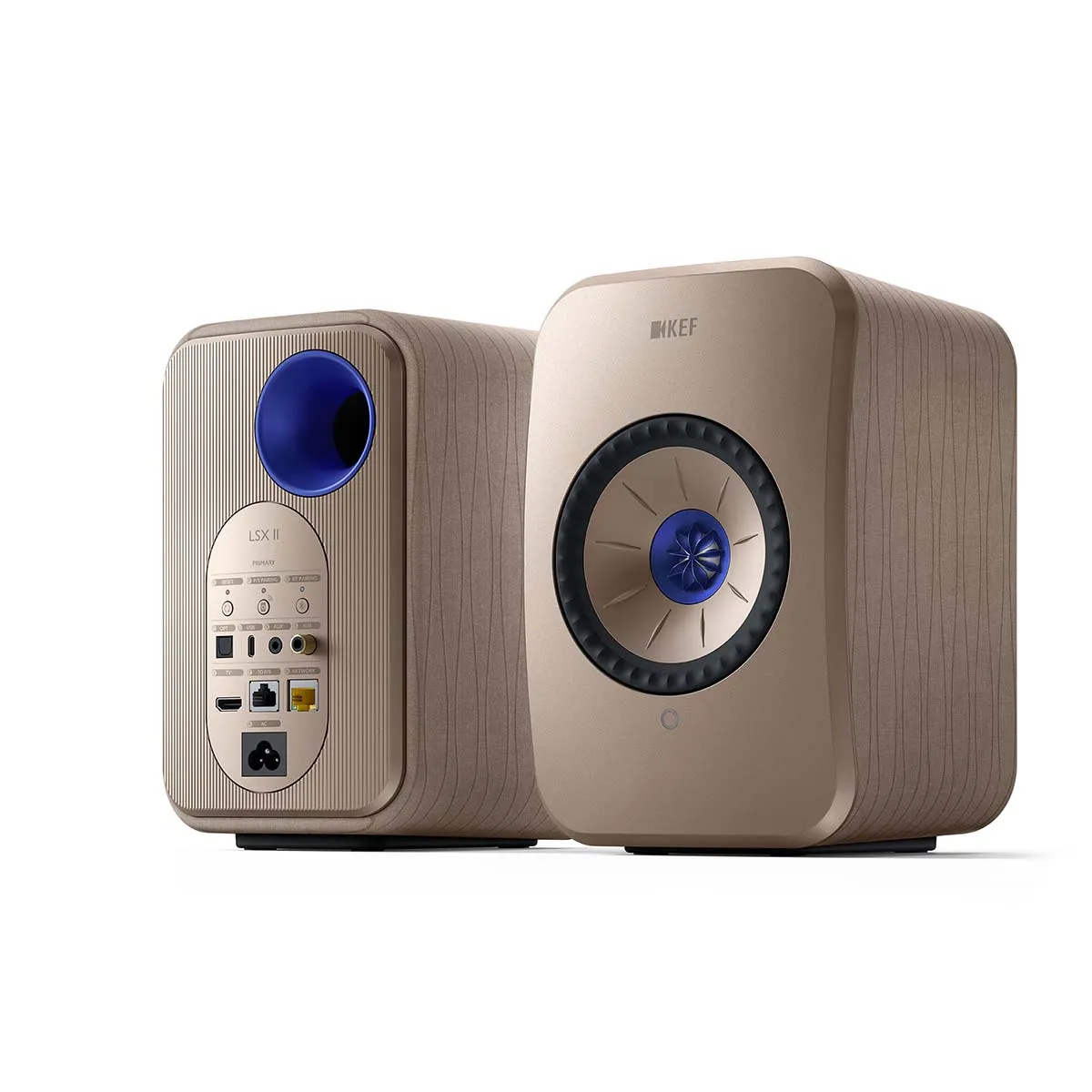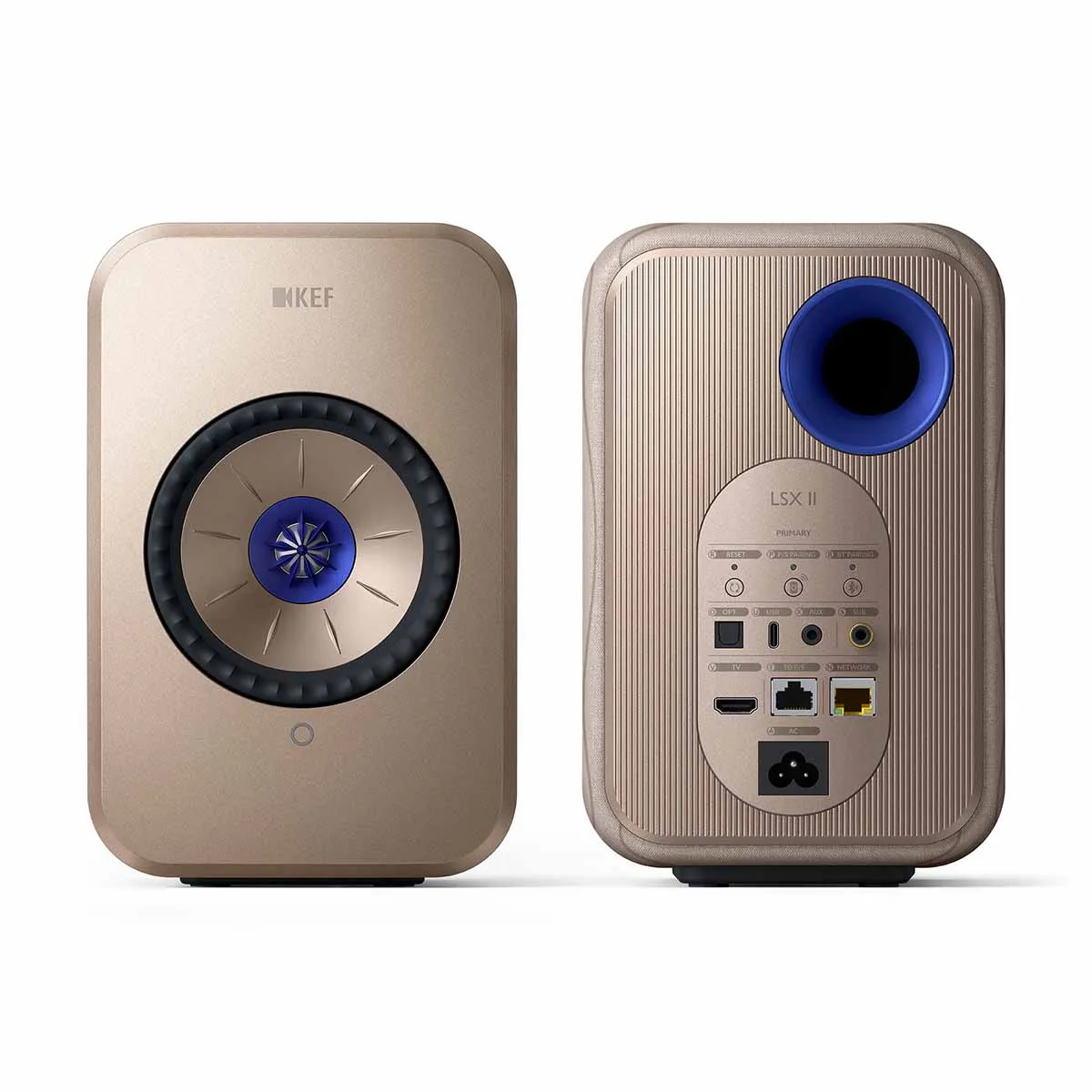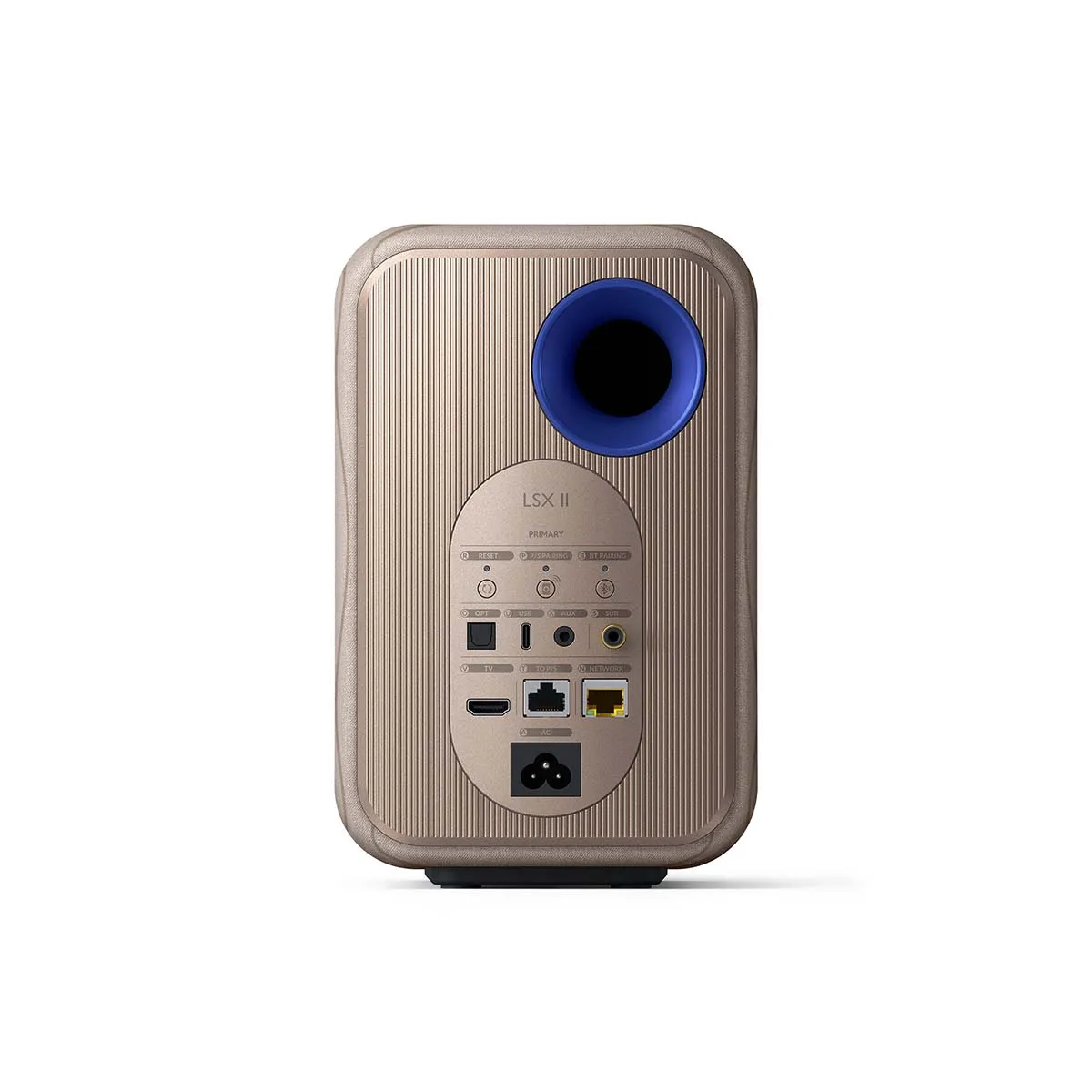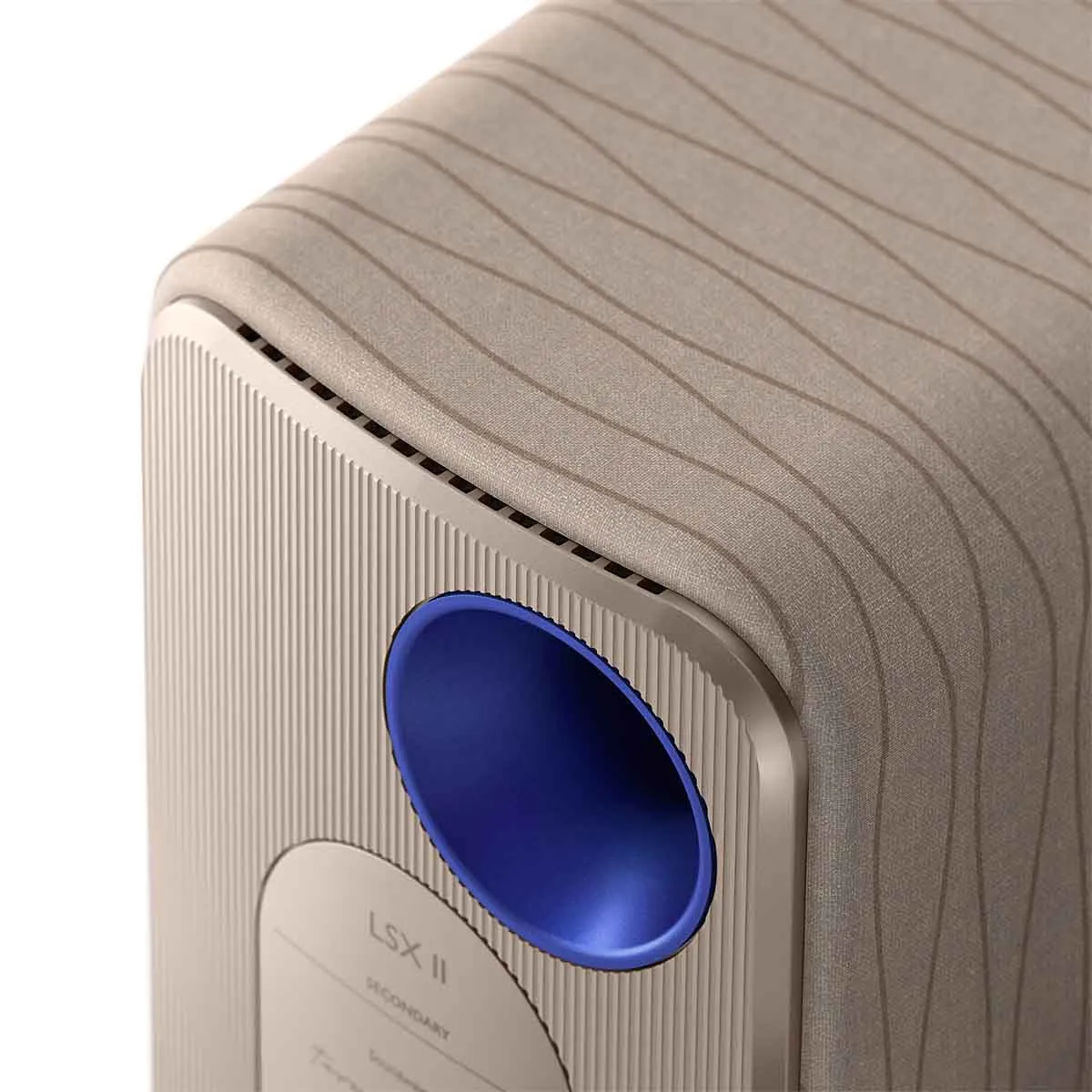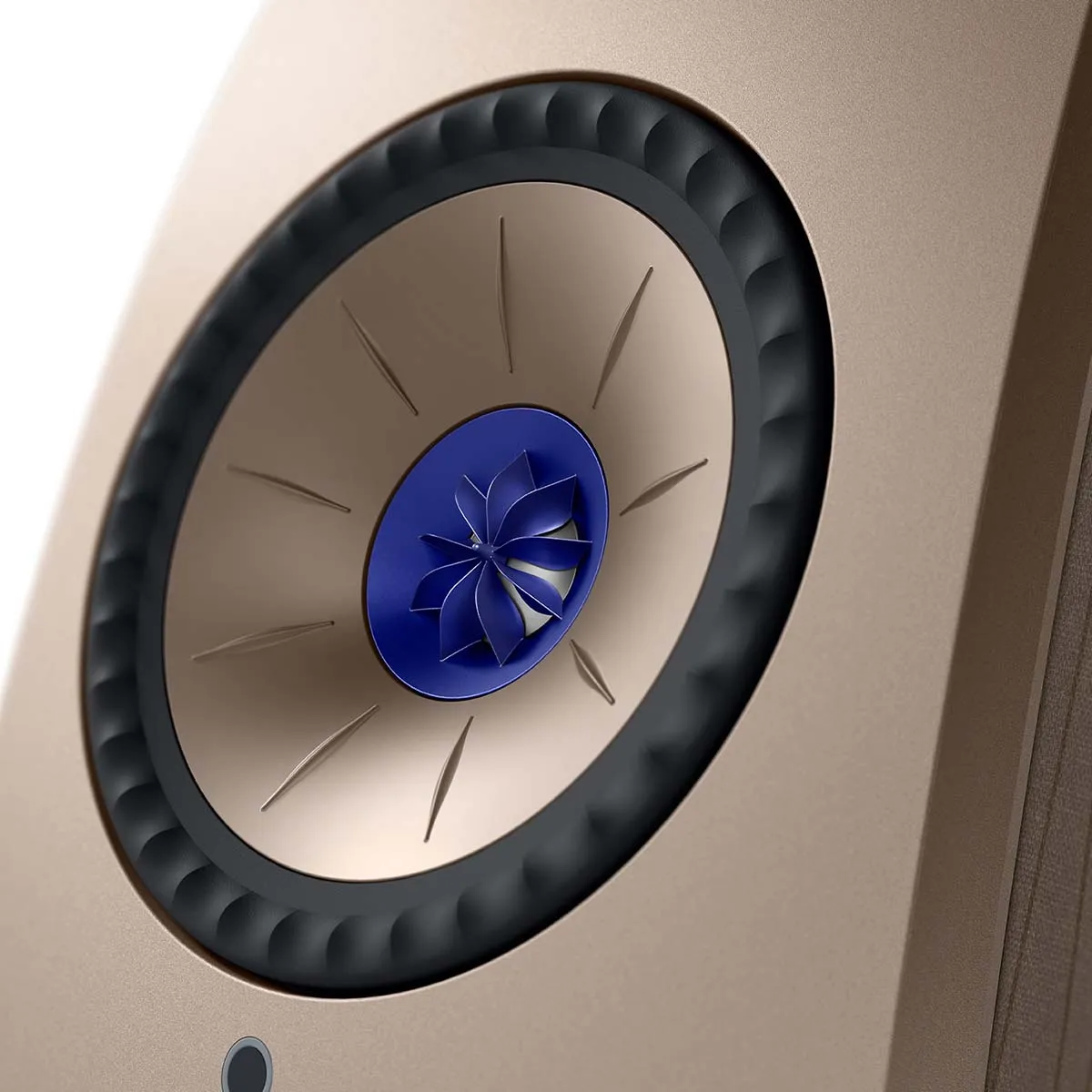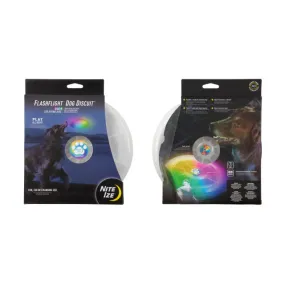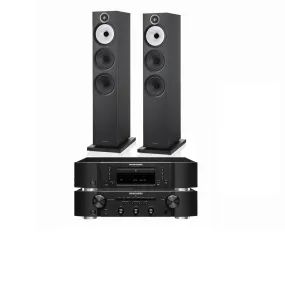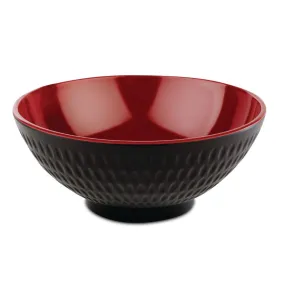There are a lot of great powered wireless speakers on the market, but we have to say, the KEF LSX II All-In-One Speaker gets you into the world of true high fidelity with a sound that betters most amp & speaker combinations at this price point. They have the look and feel of a true luxury product with a design, fit, and finish you’d expect on multi-thousand dollar speakers.
Most of you have probably heard of the British speaker company , but for those of you new to audio, KEF has been around since 1961. In 1988 they developed and patented their Uni-Q driver, which was the first true coincident source driver the world had ever seen. Ever since reproduced sound was first invented, engineers have been trying to achieve the perfect speaker. Many people believe the perfect speaker would be a single sphere that produced the complete range of sound. So far, no one has invented that, but aligning the tweeter with the woofer takes you pretty close to this concept, which is why KEF was able to patent their Uni-Q technology. KEF has been improving their Uni-Q driver ever since and the LSX II is a great example of how well it can perform.
We had a blast with our evaluation units and we wanted to share with you everything we found when playing around with these great speakers.
Design & Build Quality
First, the luxury experience starts right when you open the box. These have a very unique box in that once you take off the tape, the front of the box folds down and you simply slide the packing piece the speakers are in out of the box, which makes it so much easier to pull them out. KEF even has instructions to grab them from the sides so you do not accidentally damage the Uni-Q driver. This is just a first class touch.
These guys are pretty small at about 9” tall, 6” wide, and 7” deep. You’ll get 5 great finish options of gloss red, black, blue, white, a special finish called Soundwave by Terence Conran with the Uni-Q driver having a different color for each type. The fit and finish is at a luxury deluxe level — they are just beautiful!
They have a very small raised piece on the bottom with four little feet that raise them up a tiny bit off the surface. Those feet are also sticky to hold them still, which is a well known way to improve the sound of a small speaker. The idea is you don’t want a light weight small speaker to slide around when you crank things up. Audiophiles have been using blue tack on small speakers for this reason for decades. KEF also makes an , , and .
Features & Technology
The rear of the LSX II has a port in the corner and a great variety of connections. You have optical in, USB C in, analog in, and HDMI Arc. There is a connection for wired ethernet and another to connect the slave speaker to the main speaker. Across the top are Bluetooth pairing, KEF wireless sub pairing, and a reset button. And there is a subwoofer — out and let us tell you — this is not your typical wireless speaker subwoofer out. More on that later…
Many computer speakers have all of the amplifiers in the main unit and connect to the second one with just a speaker cable. The LSX II takes things a step further with the amps built into each unit. There is a 70 watt amp for the woofer portion and a 30 watt amp for the tweeter. These amps are obviously fine tuned to each driver which always gives powered speakers like this a leg up. Having a separate amp for each speaker component with electronic rather than passive crossovers is a much better way to go. You normally get a much more effortless and open sound, which is certainly the case with these.
There is a full plethora of music streaming available with Airplay 2, Chromecast, UPnP, Roon, and Bluetooth 4.2. Built-in services include Spotify via Spotify Connect, Tidal via Tidal Connect, Amazon Music, Qobuz, Deezer, and Internet Radio.
The DACs inside the LSX II are capable of accepting High Res audio up to 384kHz/24bit. The sample rate downgrades for Optical. If you are serious about better sound quality, you should use the wired connection between the speakers as that will take you from 48k to 96k.
We initially set these up in what would be considered a medium sized room of about 14 by 21 with 9 foot ceilings. The quick start guide tells you to download the KEF app first, but we just found them on our iPhone as a network, clicked it and they connected quickly, then we downloaded the KEF app. We then used both and Tidal for streaming testing.
KEF must have some serious computer engineering behind their app as it is the best we have ever seen for a wireless speaker. We don’t think you will ever want to use the little remote that comes with the speakers after seeing their app.
For starters, it is very clear and well laid out with your inputs across the top and your other streaming options logically grouped together right below. It is super easy to find music to play and KEF gives you many options on how the speakers behave. You can adjust the power saving modes, the wake up source, the LED light, and more. If you need to physically put the right primary speaker with all the connections on the left side of your room, you can flip them in the app. You also get some great volume settings that let you fine tune the way the remote or smart device works, and set a max level. They are just super flexible.
But the real magic happens when you push the little EQ button. Ask any speaker engineer what has the most impact on how their speakers will sound, and they will tell you it’s the room. But the average person setting their first pair of true high fidelity speakers normally does not have the knowledge a seasoned speaker designer might have on the things you can do with a speaker like this to vastly improve how it sounds in your room.
KEF brilliantly gives you two different types of adjustment menus — normal and expert. You will need to name a profile to get started, but the first question presented is if you want normal or expert mode. In expert mode, you have access to all of the actual frequency settings to adjust the speaker. But their brilliance comes in with normal mode, where you just walk through a few questions to adjust the speaker performance to your room. As you can see from the screenshots below, it asks if the speaker is on a stand or a desk. Then you tell the speaker about the distances in relation to the room and if on a table top. Next, you’ll tell the LSX II how lively or dead your room is and the relative size of your room. For the sections people might have questions on, there is a little pop up with answers. Should you add a sub, this is also super easy. You can choose from the KEF subs or do a custom setting where you again answer some simple questions to dial things in.
This is just so cool! Through technology, KEF is enabling someone who might be a novice, but wants better sound to quickly do what could take a long time otherwise. If you are an audio geek like us, you will love the expert side, especially the subwoofer settings. You can set both high and low pass, sub polarity, and gain — very slick. And inside both settings, if you are using a KEF wireless adapter, you turn that on to account for the latency in the wireless signal.
Performance
We first used the normal mode to quickly set them up, then started listening. One big claim of the KEF Uni-Q driver is how evenly it disperses the sound, so even if you are sitting pretty far off-axis, you still get a great stereo image. To our ears, these speakers really showed that off. We could sit directly in front of one speaker and still hear a great stereo soundstage. But, as you might expect, when we sat dead center, it was even wider and deeper with great precision in the location of instruments.
The first cut we played was Free Falling from Tom Petty and the Heartbreakers. You could swear from the midbass and up, we thought we were listening to a far more expensive set of speakers. Every individual instrument is totally separated from the others with an effortlessness to the sound that you get on very high-end gear. Granted, these do not go that deep in the bass, but what is there, after you fine tune them to your room, is very pleasing to the ear with great tonal quality. You can really tell these come from a speaker company who knows how to make seriously great sound.
After about two minutes, another aspect jumped out. We were tapping our toes and bobbing our heads up and down, really getting into the rhythm of the music. The more tracks we played that had a lot of swing and rhythm, the more we realized, these little speakers really get the timing right, which draws you into the music.
Another cut that sounded really good was Bleed to Love Her on “The Dance” by Fleetwood Mac. This is a Lindsay Buckingham song with a lot of fast guitar. We could hear every nuance on this track. We did notice on this cut, at a higher volume level, the room was probably too big for the speakers as they were getting a tiny bit boomy on the deep bass. But boy, the guitar plucks were just spectacular.
We then decided to connect up the to the speakers. With this being on their list of subs in the app, you could see in expert mode where it finely tuned both the low and high pass settings. We replayed those two cuts and boy, having that bottom octave really made things come to life. As you would expect, the bass now reached deep and had far more punch, but the speakers seemed a bit more open and effortless as adding the sub took the deep bass demands off the midrange driver. When we went back to Free Falling, we felt the timing with the sub on was not quite as engaging as with it off, so we played around with it on and off and confirmed to our ears that the rhythm and pacing was better with the speaker by itself. This makes sense since without a sub we were back to a fairly perfect point source. Overall though, the benefits of the sub far outweigh this little nitpick.
If you also want to take your great new music speakers and improve your TV sound, the HDMI Arc connection will make that a snap. Your TV remote will take over the volume control of the speakers when you turn on your TV and it will switch instantly to that input. Even if you have an older TV without an Arc connection, you could use the optical input without the volume feature. This application is where having the sub will really make you smile as that little KC62 can do great justice to those big special effects.
Overall Recommendation
We do think the LSX II without the sub is best suited for small to mid sized rooms or desktop use. When you try and push them really hard, which you would need to do in a large room, you can sense a bit of strain and they just can not move enough air to fill the space. But if you add a KEF sub, that is a different story!
We really have to hand it to KEF with the new LSX II speakers. They created a speaker capable of producing absolutely amazing sound, but they also thought about how the speaker will react in a room and how to make it very simple for anyone to get the best sound possible from their speakers with very little effort. The LSX II is not inexpensive but you get a beautifully built luxury product that will give you sound like you would expect from separate components. With the option of either starting out with a sub or adding one later to turn these into a true full range speaker, they may be all many people need to enjoy music like they have never experienced before for decades.




